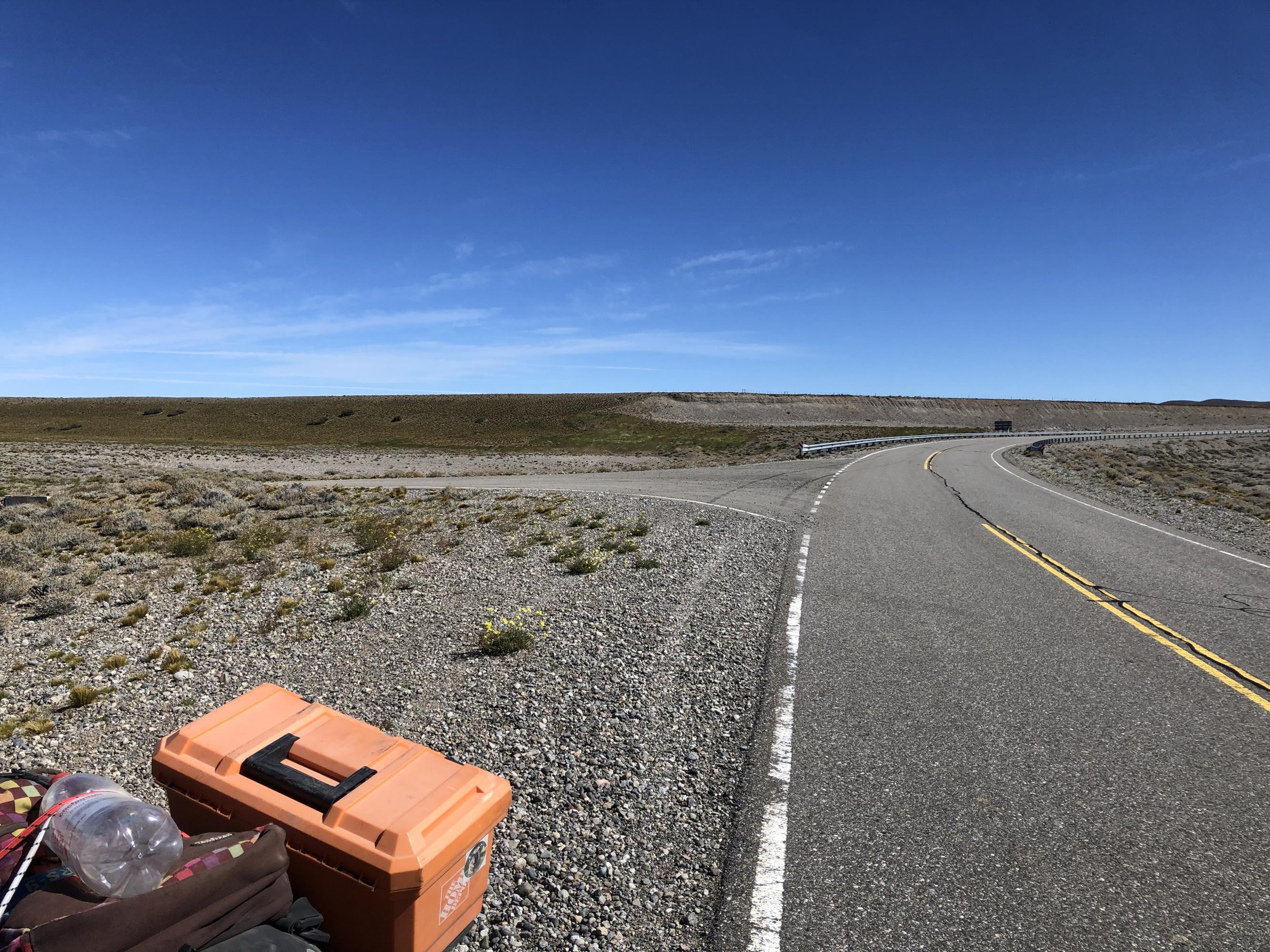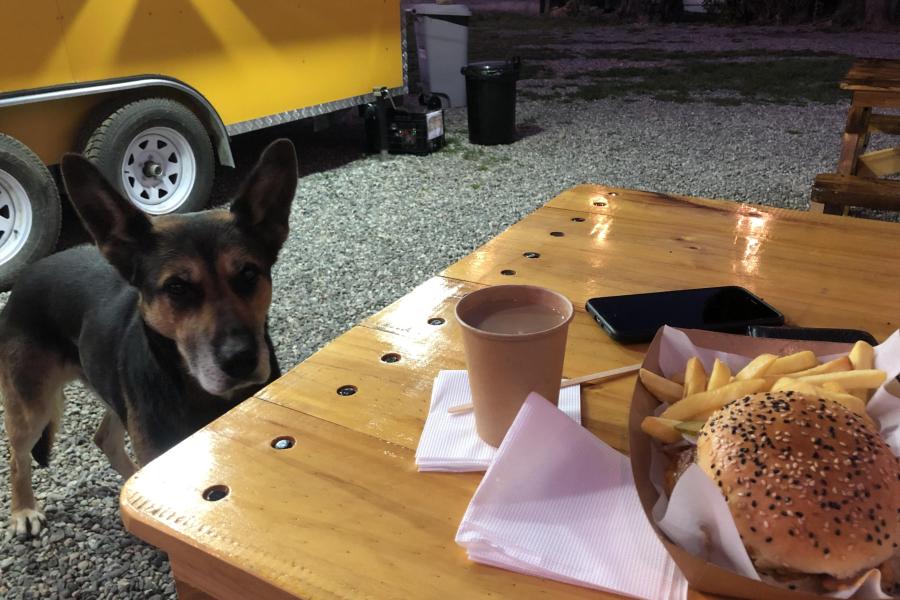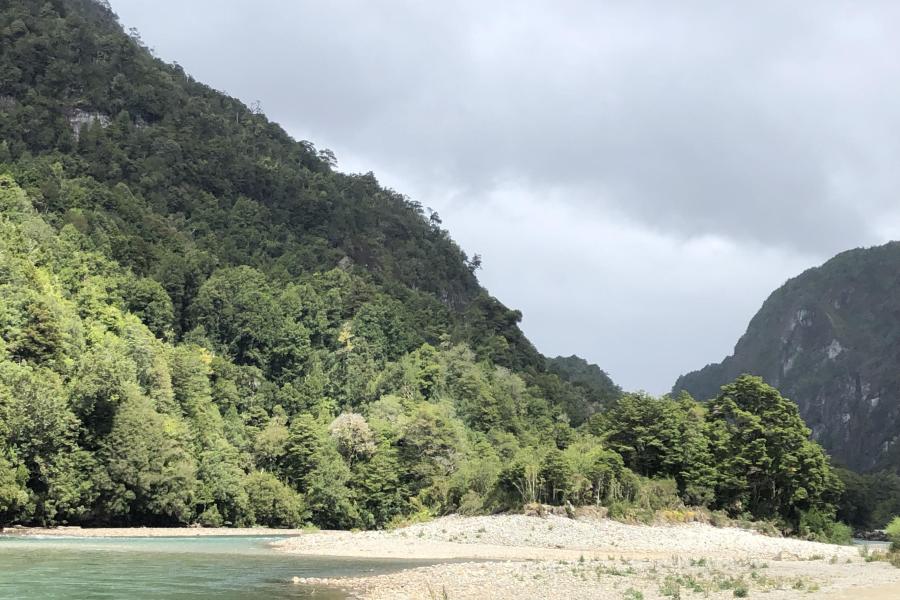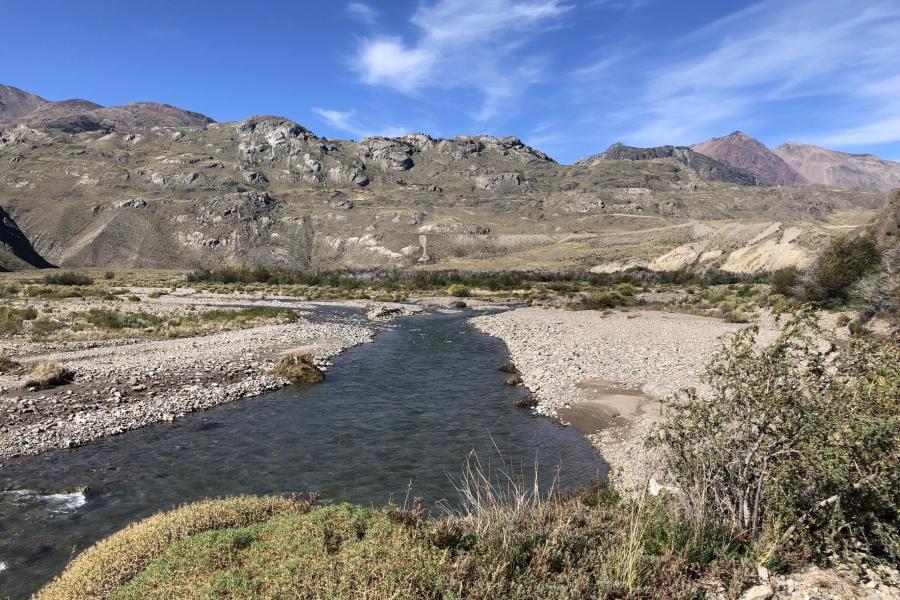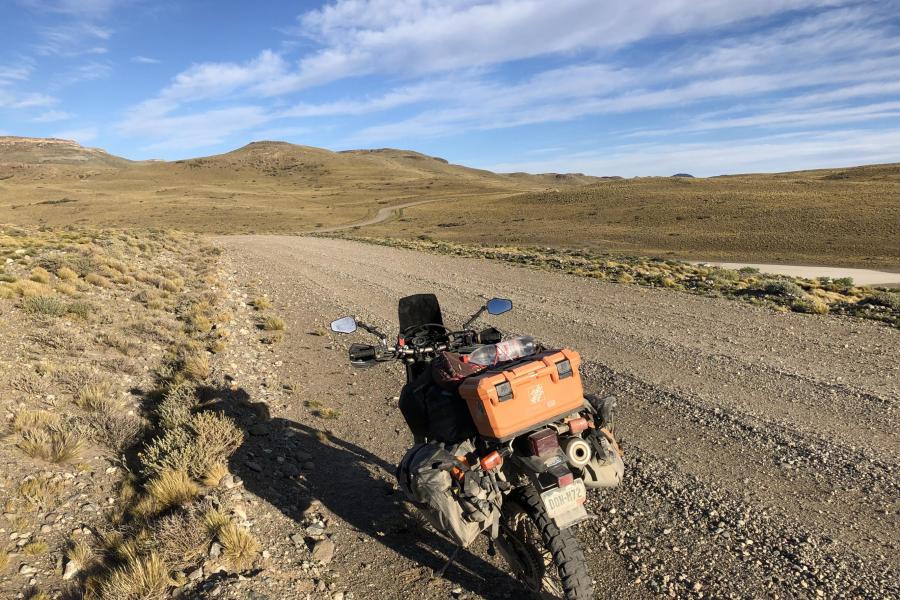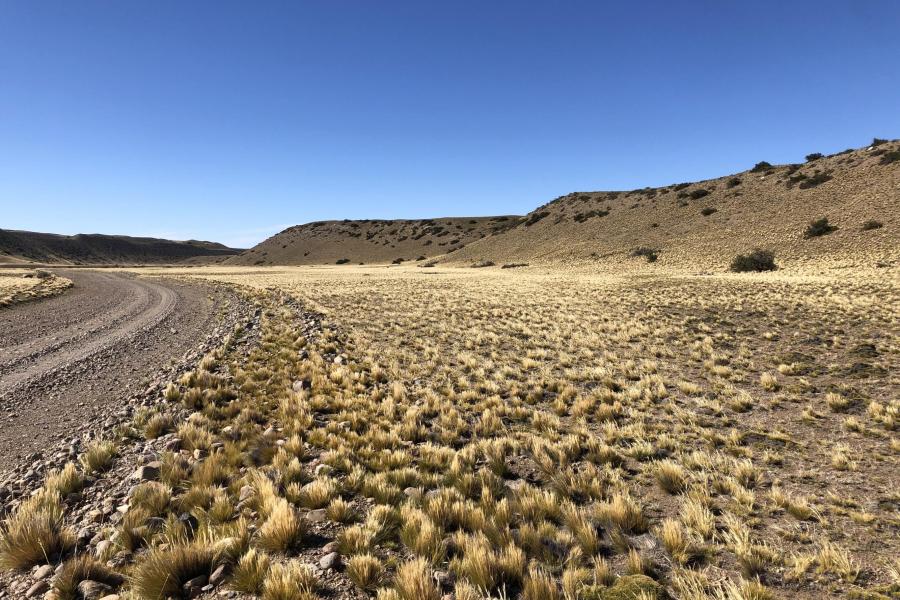Chile, The Carretera Austral
Country
Riding into Chile was immediately fun, swoopy tar running into the “adventure” town of Futaleufú. It’s best known for white water rafting on its namesake river.
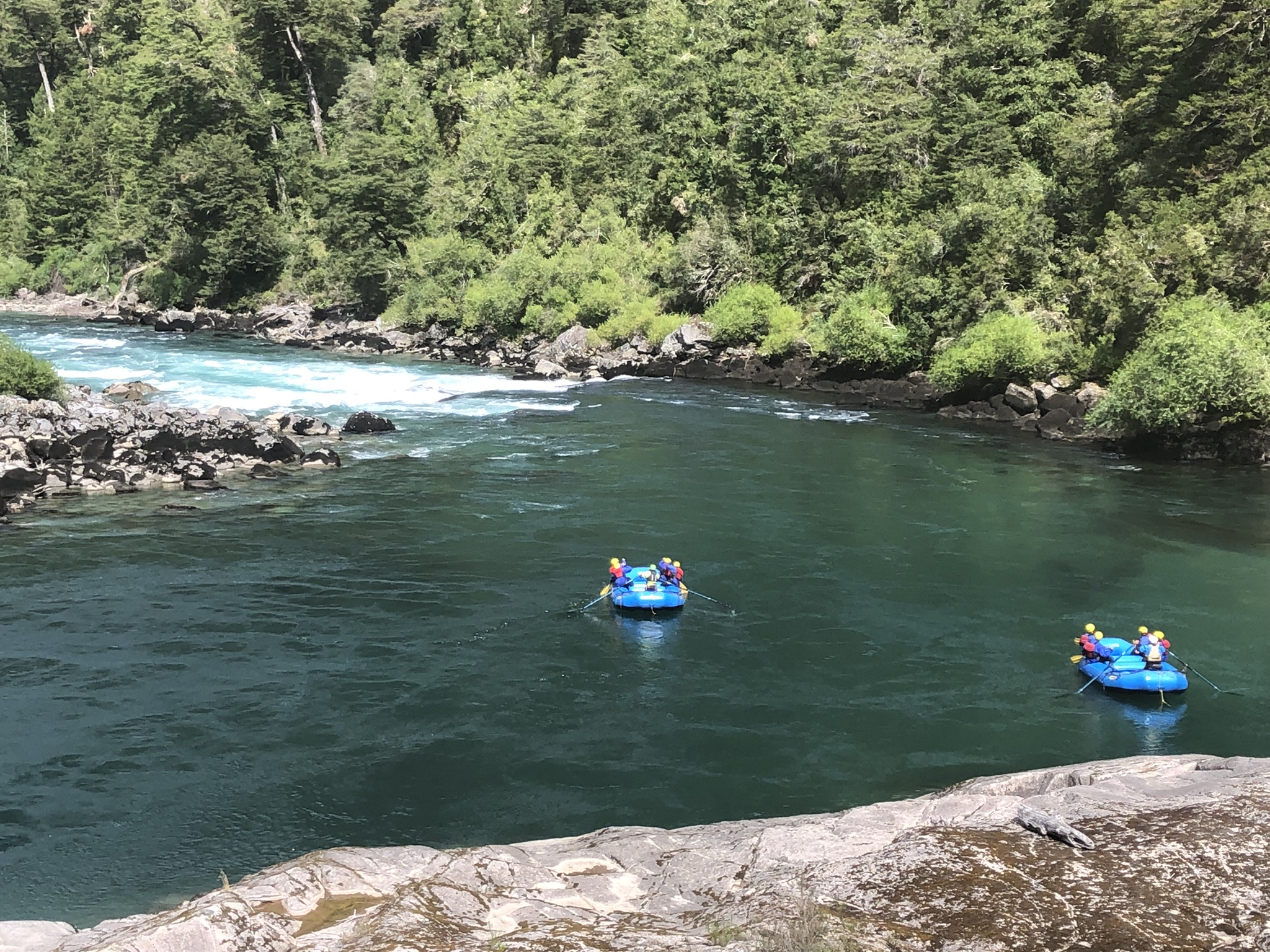
Arriving in a new country requires housekeeping: get local money, buy new phone SIM and grab a coffee.
Wandering back from the ATM I found a bloke inspecting the bike. German “Rico” Ricardo had ridden a DR from Adelaide to Cairns some years back. He was on a short term tour of Patagonia in a van with family and was envious of having two wheels.
We adjourned to a park with a couple of beers to discuss these matters.
This was pleasant but it didn’t help reaching my intended destination. Oh well. A commercial campground just out of town was much nicer than I expected, just the right facilities and quiet even with others close.
Computer nerd joke: The great thing about standards is having many to choose from.
Mains plugs, right to left:
- Every country USA to Peru 110V parallel flat prongs
- Argentina same as Australia 220V angled flat prongs
- Chile 220V round prongs
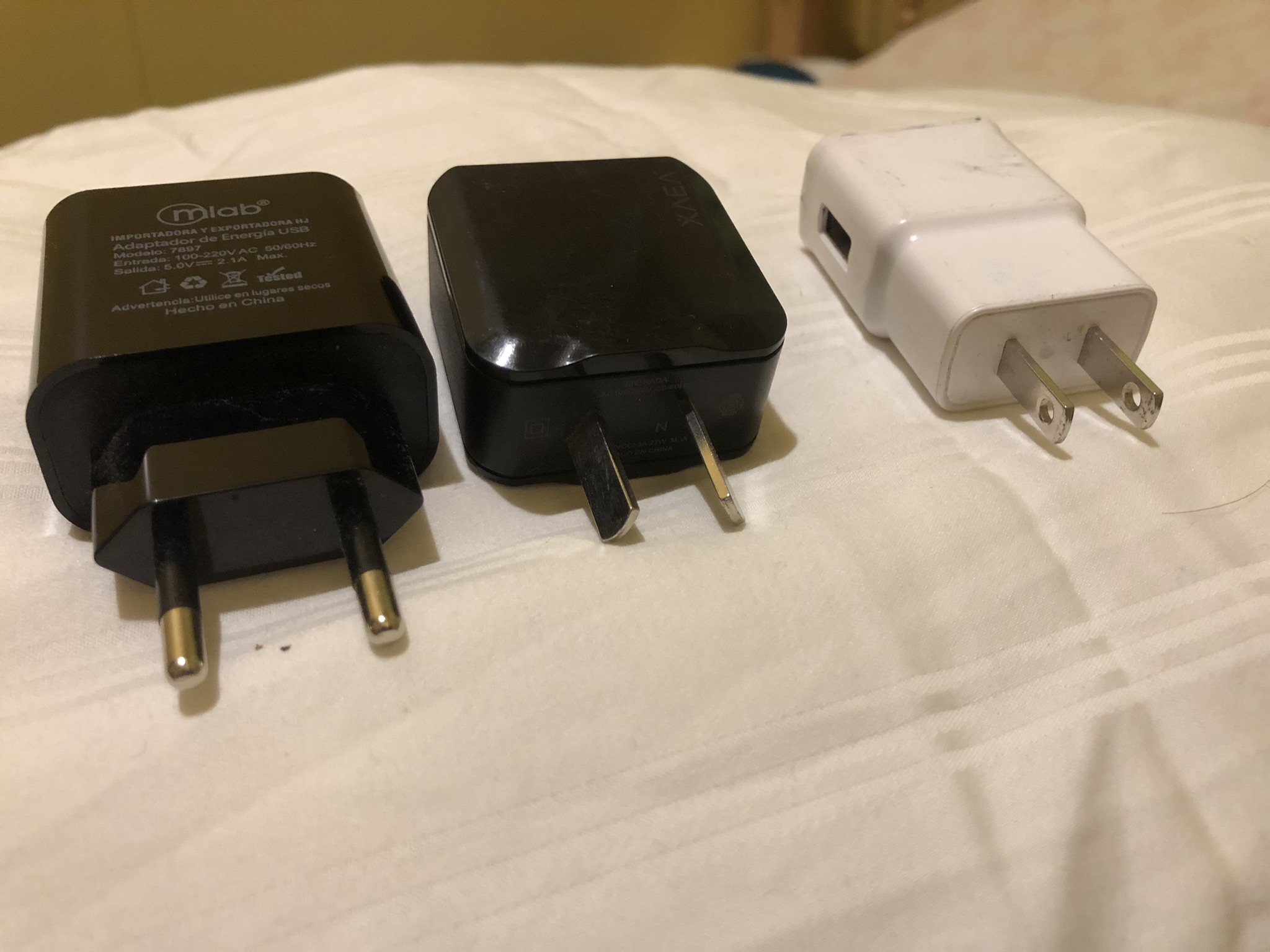
The first morning in Chile was about reaching the Carretera Austral. First up, they rolled out the carpet in welcome.
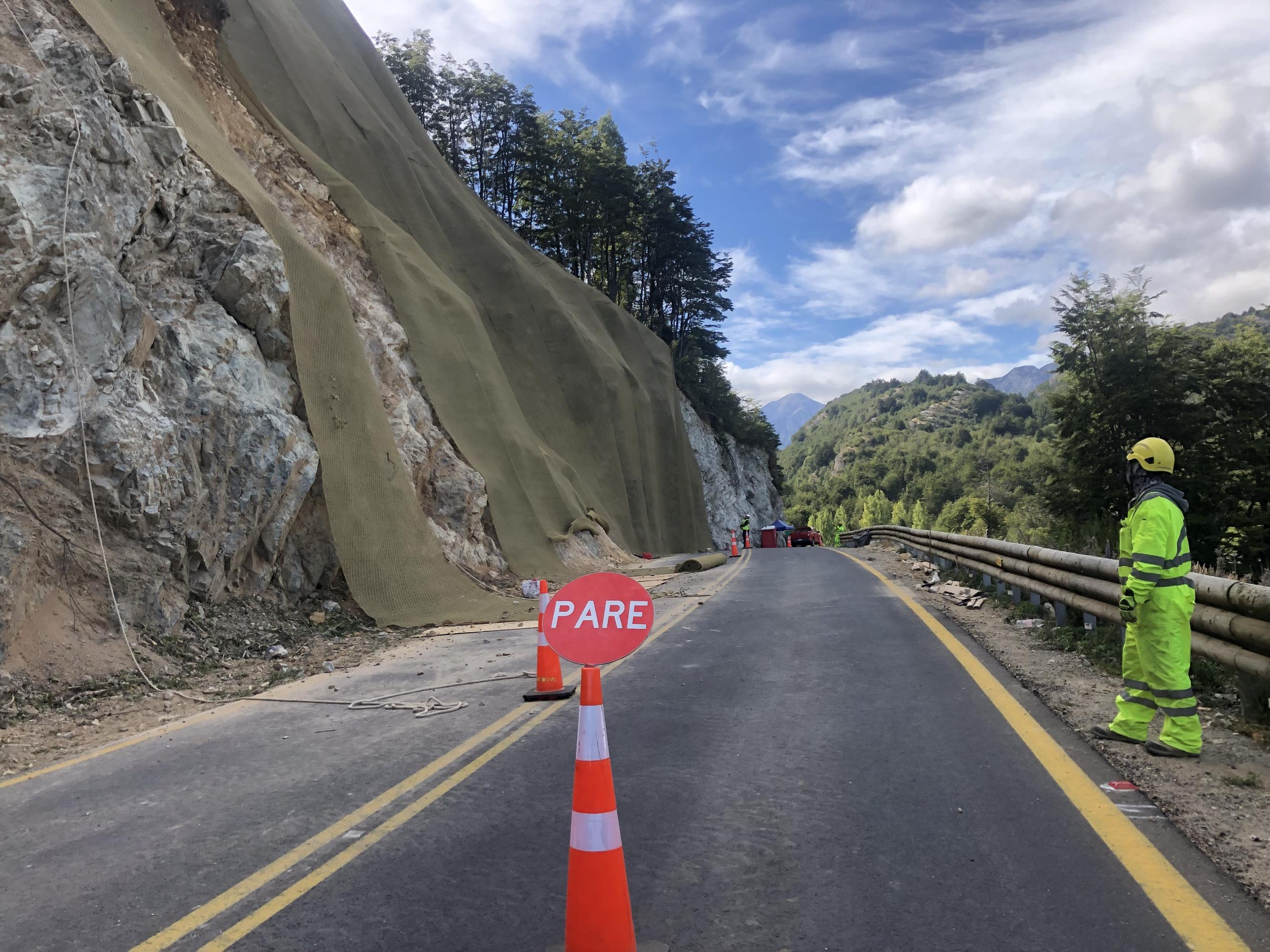
... then that nice swoopy tar disappeared pretty quickly, replaced by dusty gravel past lakes and rivers.
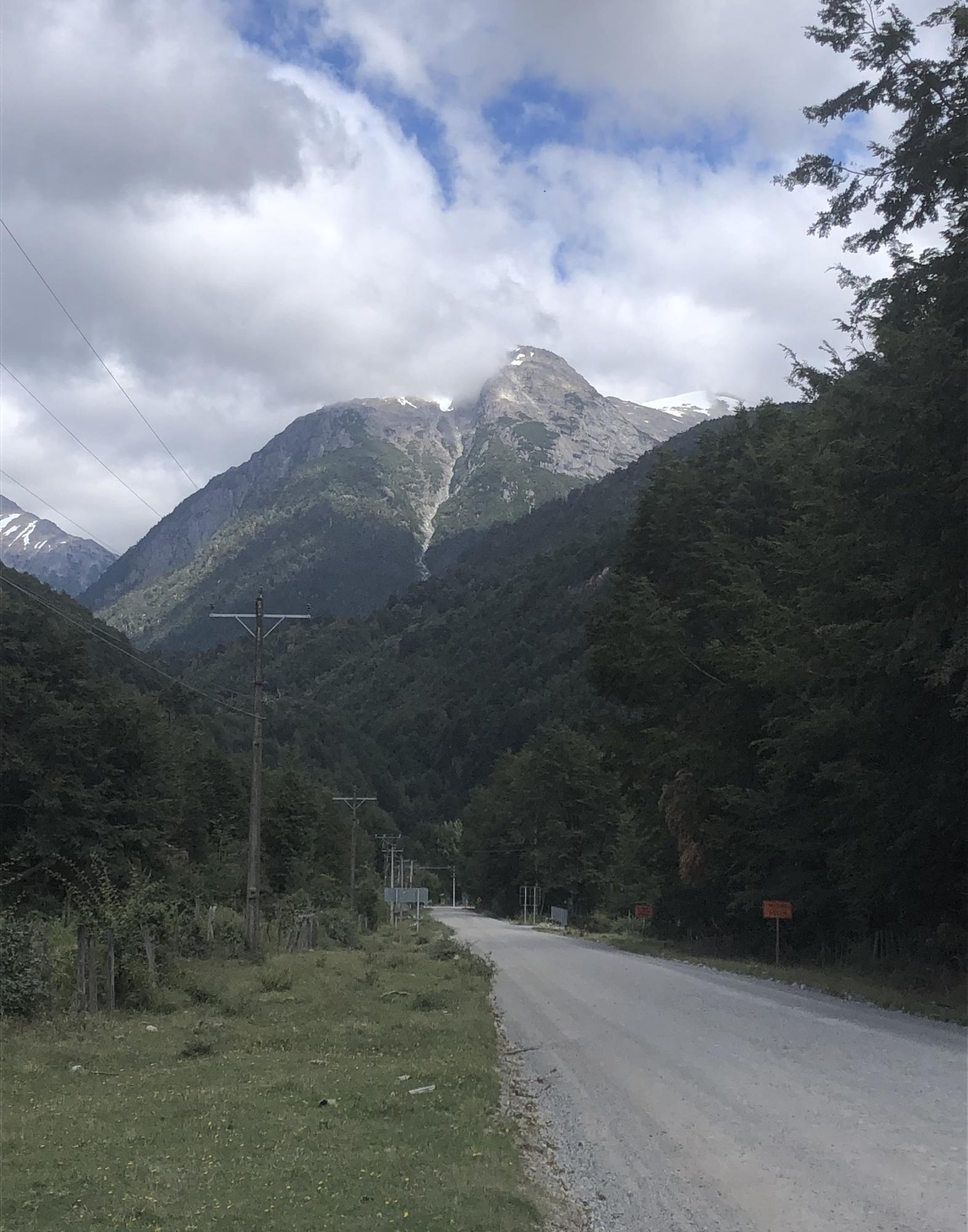
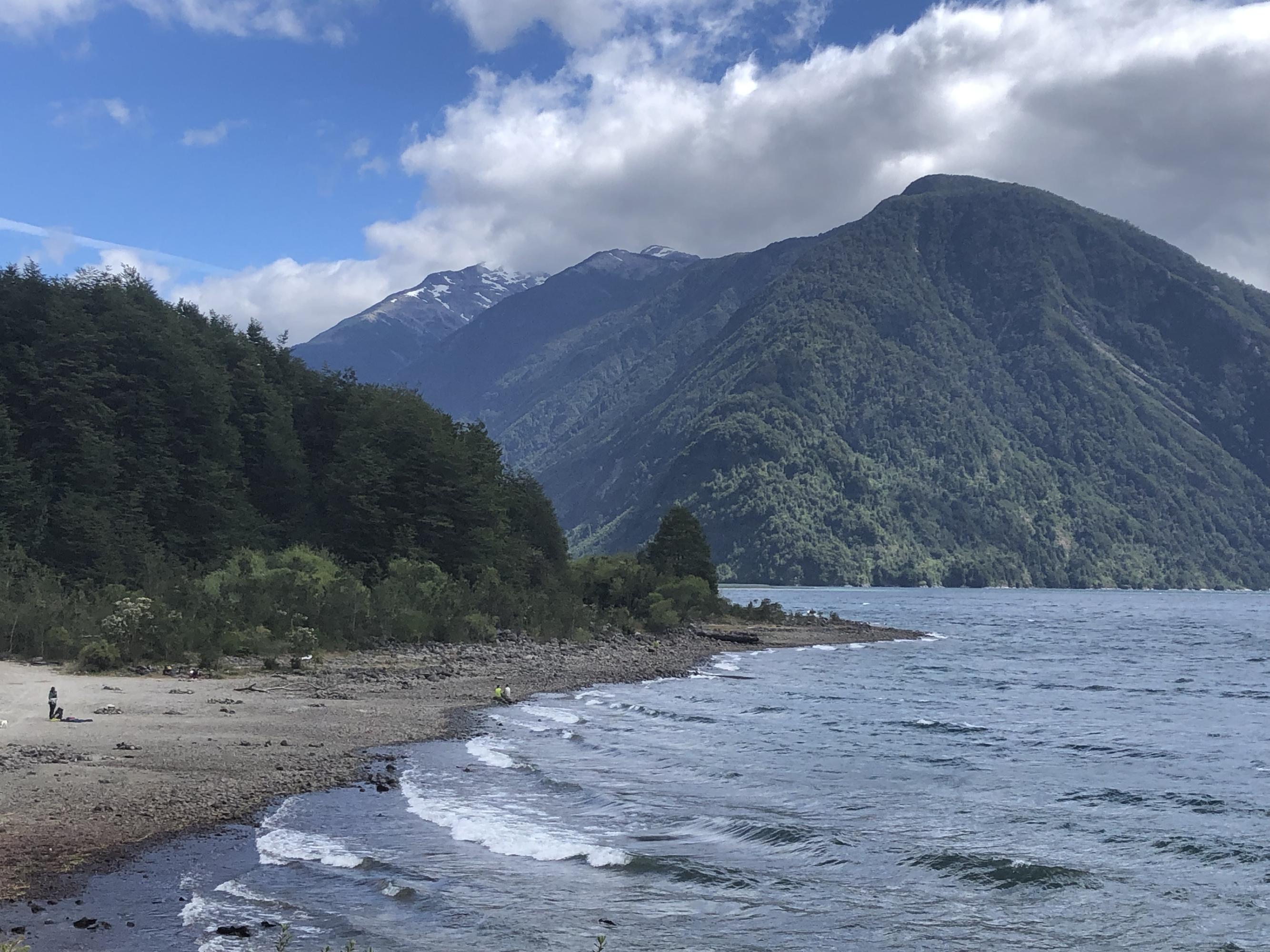
Following traffic on the dirt was annoying, so I tried to stay just ahead of each pack of cars. Few pics as stopping would have meant eating dirt from the same cars all over again.
By and by I reached highway 7, the Carretera Austral (“Southern Highway”). It’s as iconic as Argentina’s Ruta 40, also running north-south through Patagonia but to the west of the Andes.
I must ‘fess up: the chapter title here is a slight exaggeration. The whole highway is over 1200km long, but I only travelled about half.
Mostly this was due to being well south of the start by the time a visa was in hand. Such is life.
There were more adventure motorcycles than ever. This theme continued all the way south - the closer to Ushuaia, the greater number of loaded up motos.
However pushbikes almost outnumbered murderbikes. They must be hardy souls. It would be a beautiful but challenging trip on a pushie.
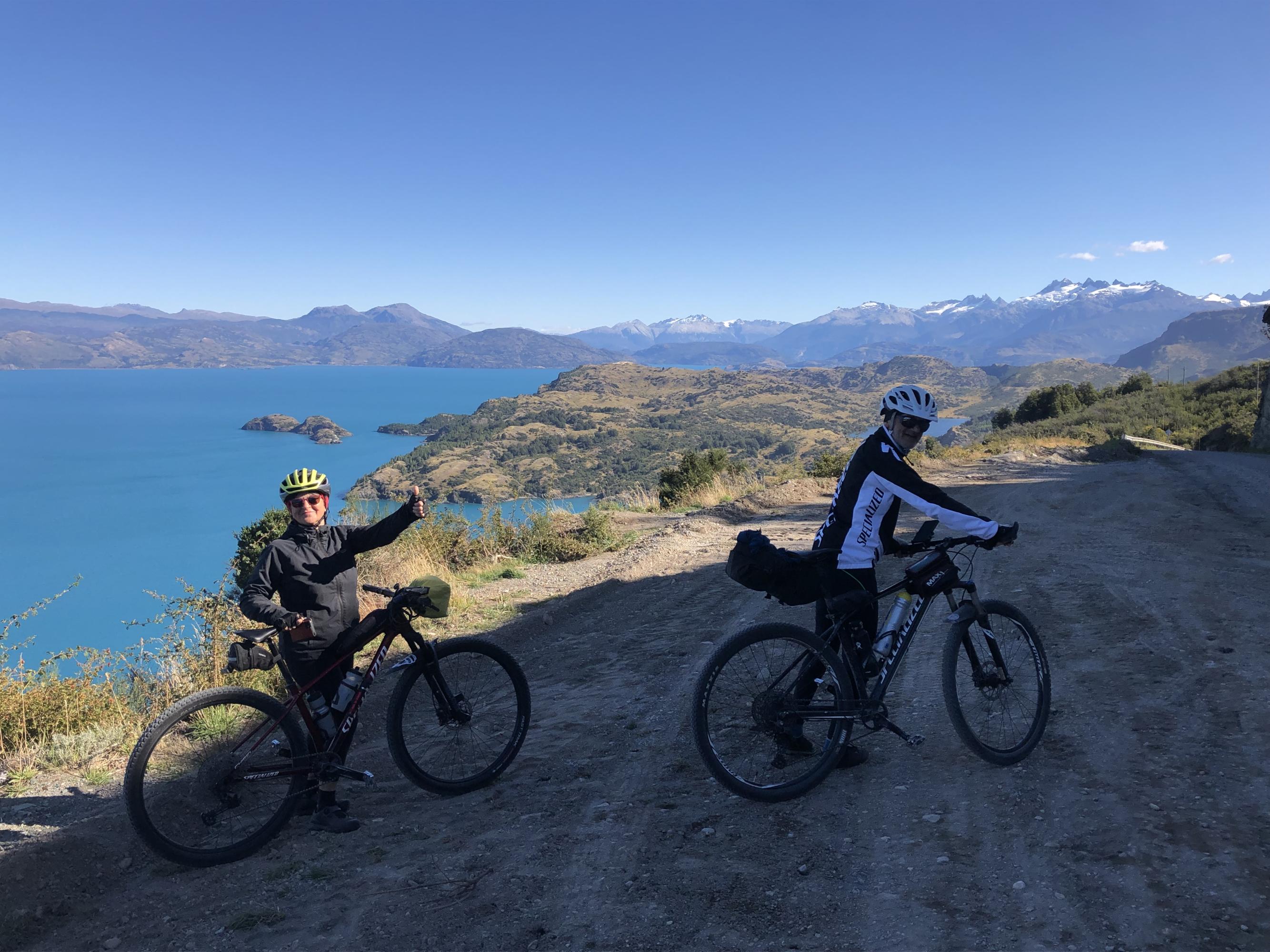
One poor rider was pushing his tredley along late in the day, many miles from civilisation. Did he need any help? Thanks but the front sprockets had no teeth left, not something I could assist with.
A mid afternoon breakfast of porridge with fruit and chocolate milk while relaxing by an aqua coloured stream.
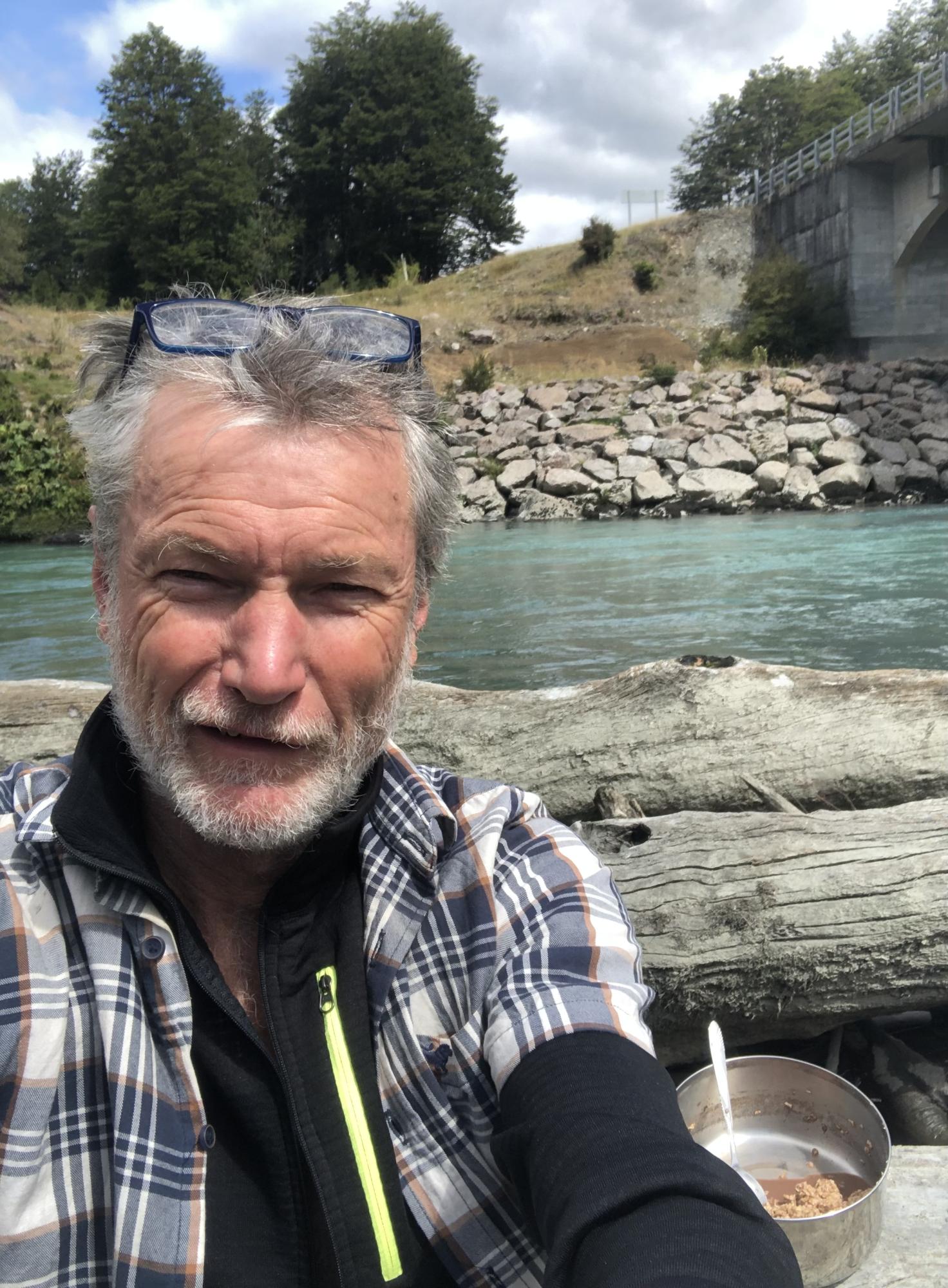
Finally being on this famous path put me in a horribly good mood. Relaxing in such a pretty spot made it perfect.
The road varied. At times it was an easy asphalt cruise, sometimes besides pretty lakes ...
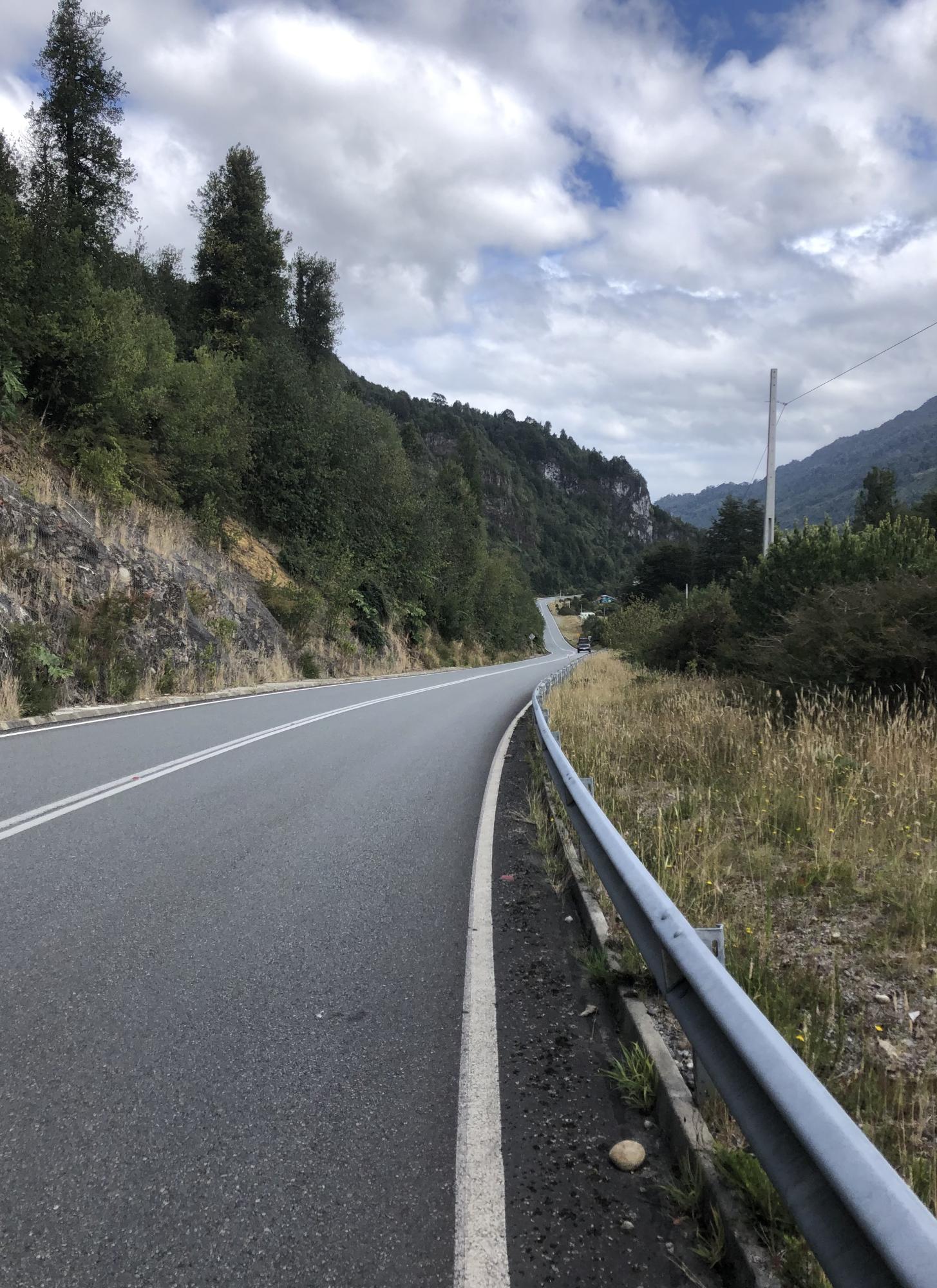
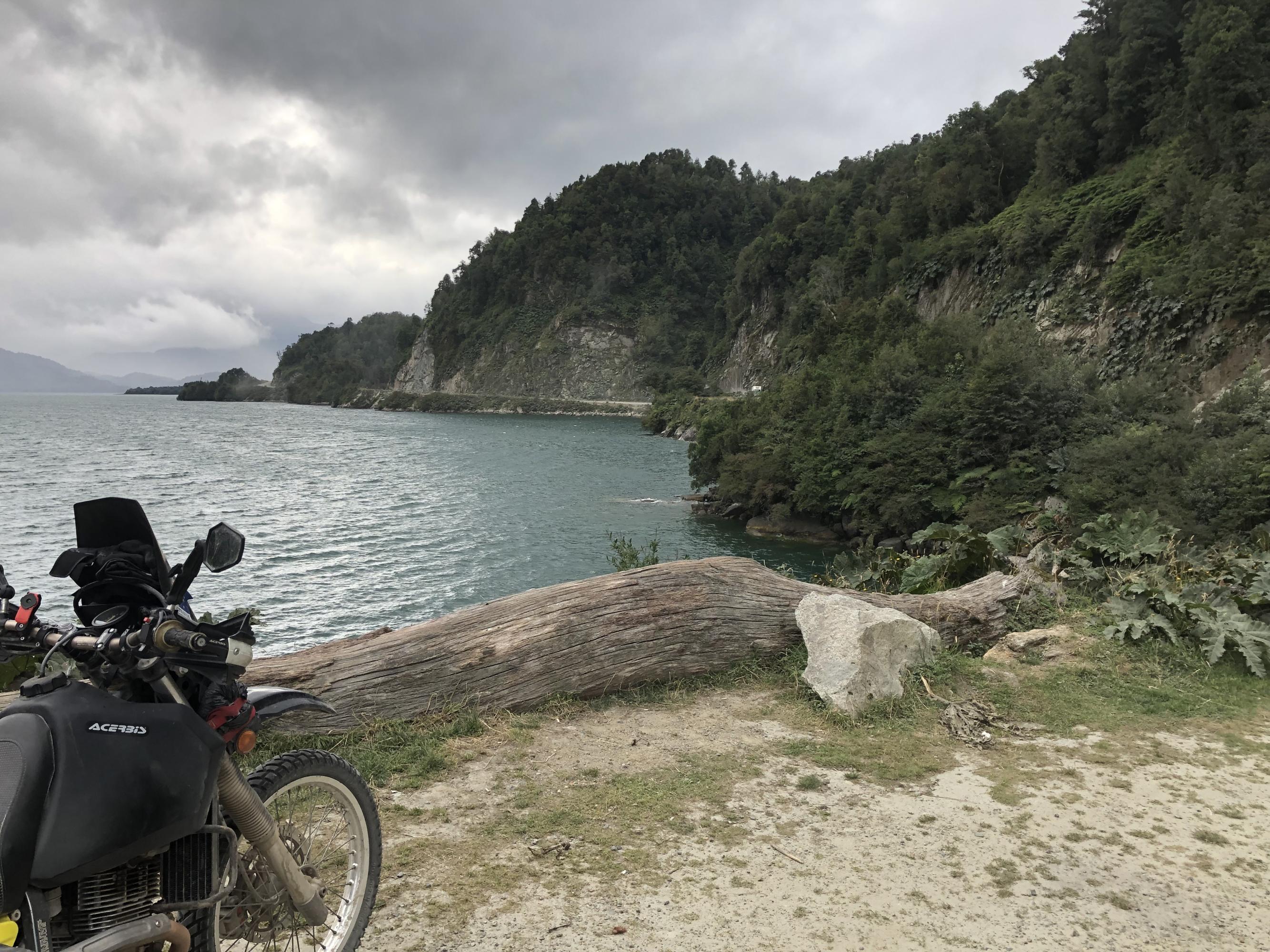
When gravel and dry it could be frustrating with dust.
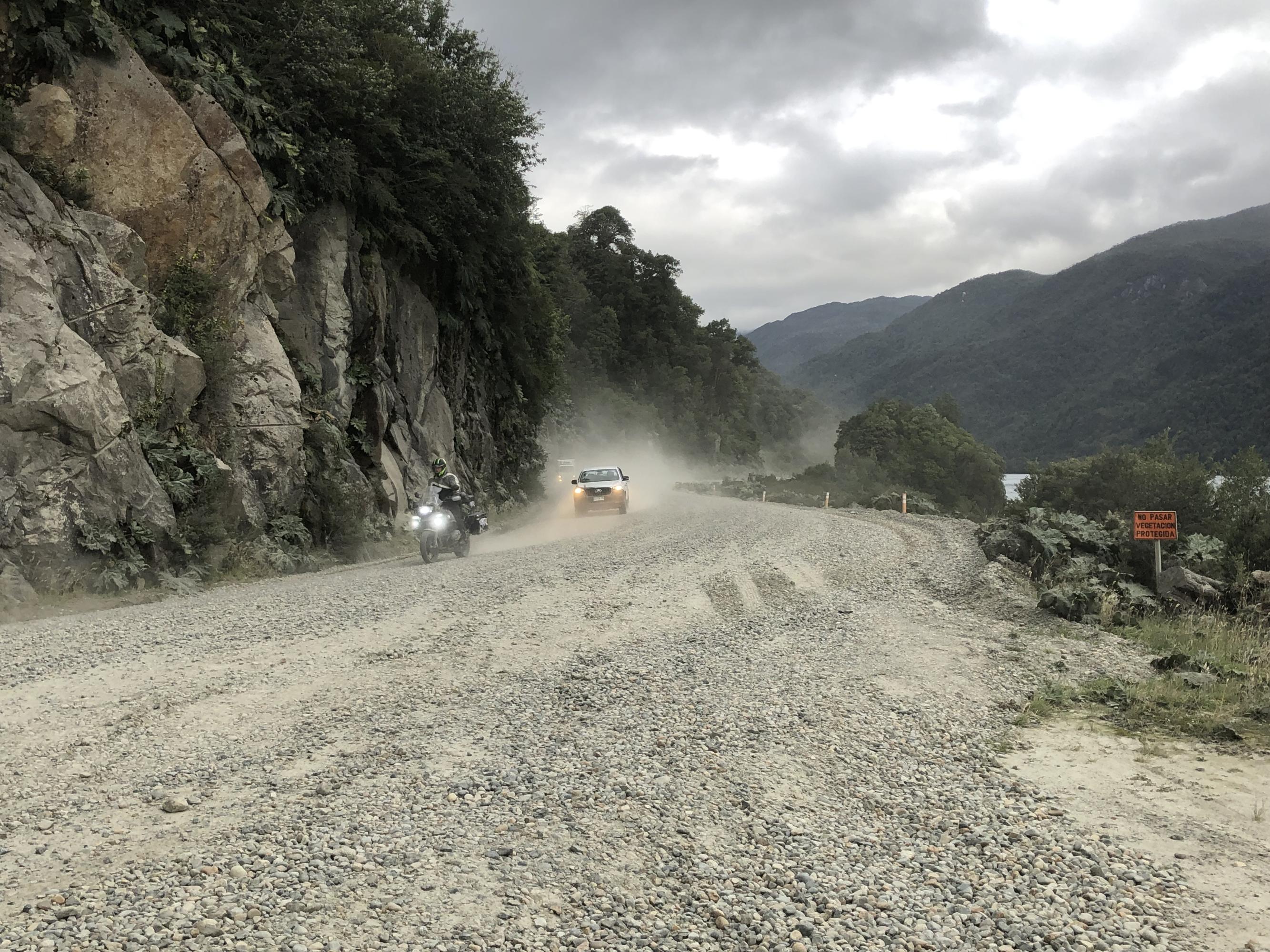
These dirt sections were far more enjoyable during or after rain.
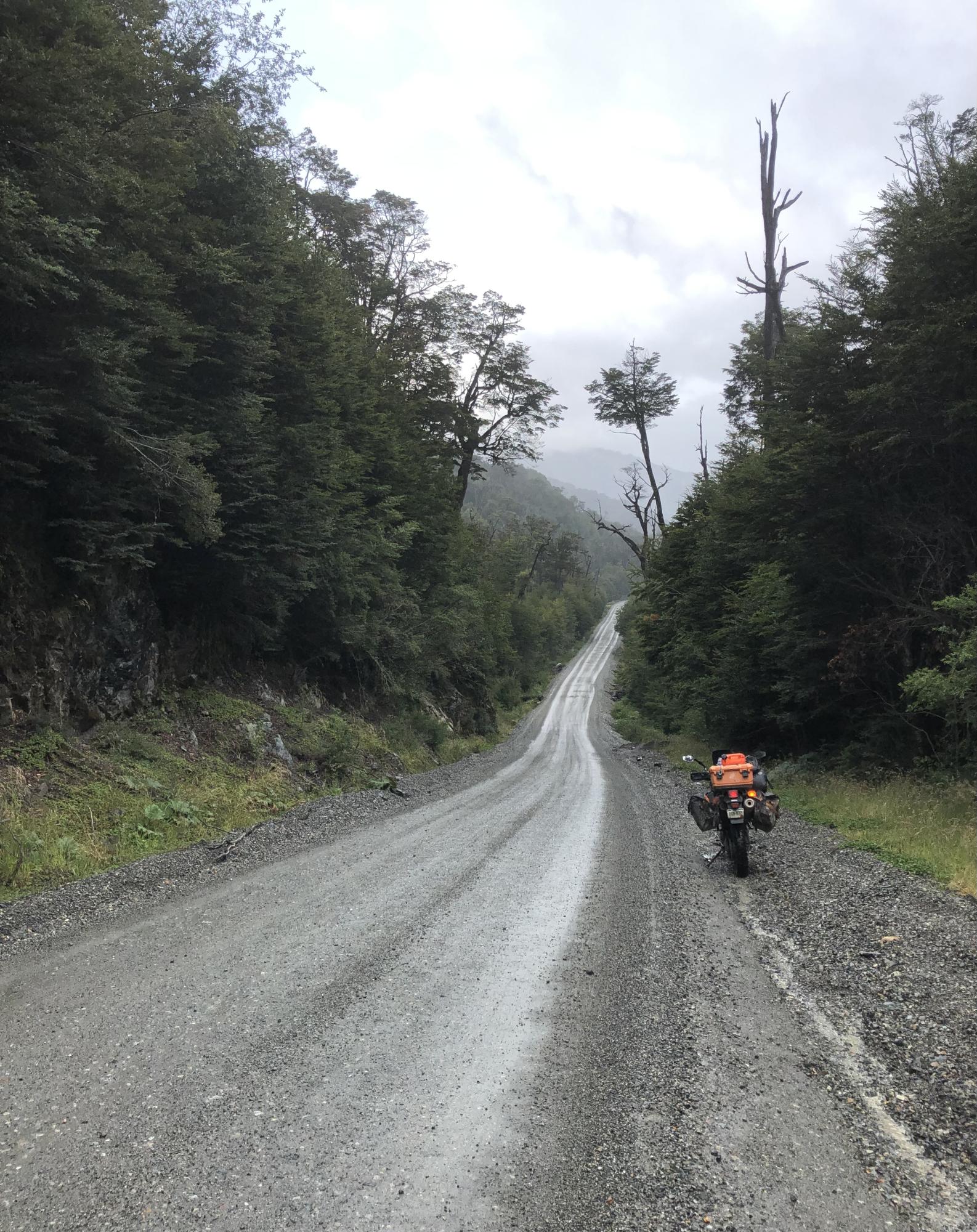
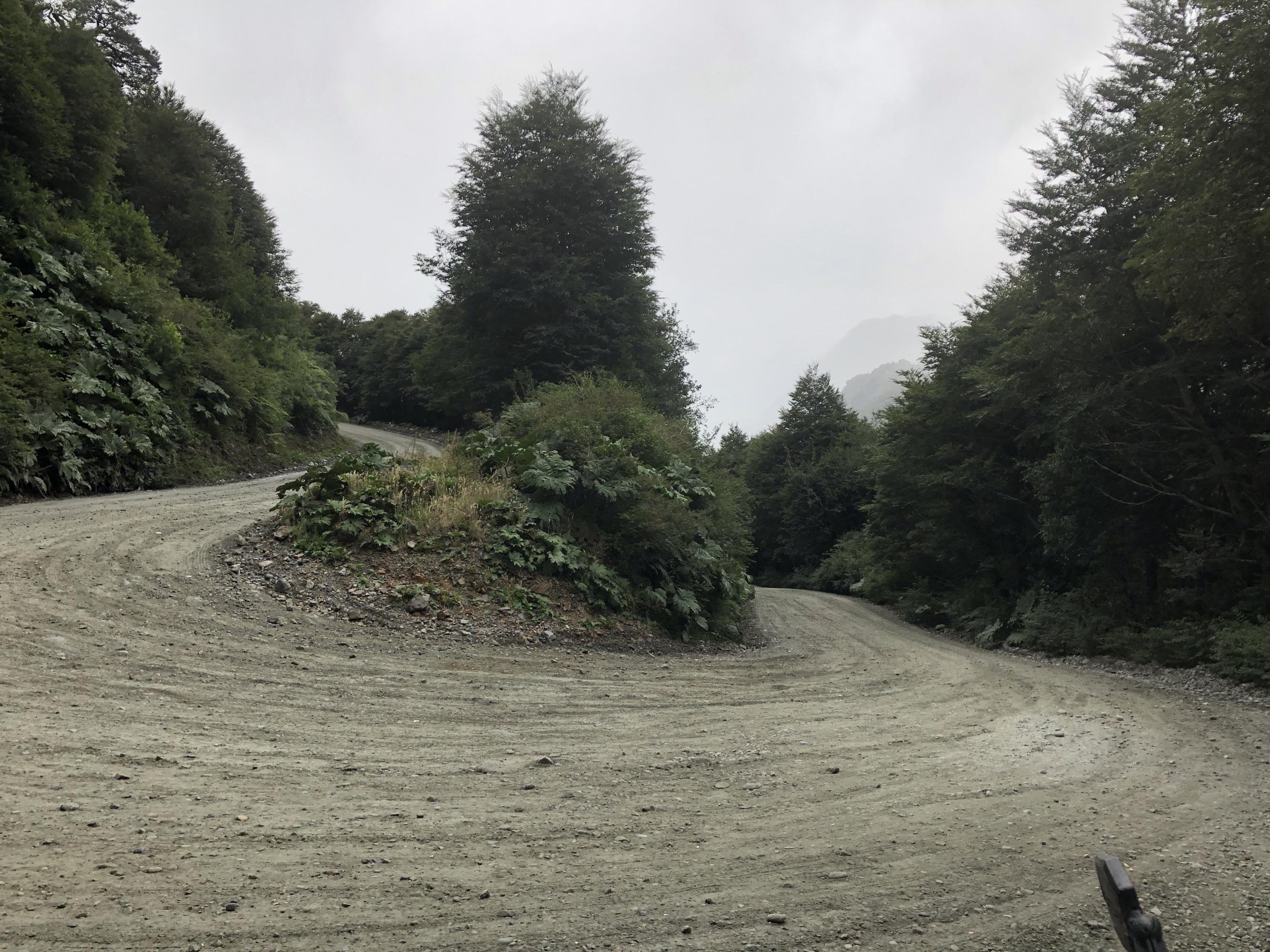
Some sections had enormous slopes of loose scree. They looked like mining tailings but were natural.
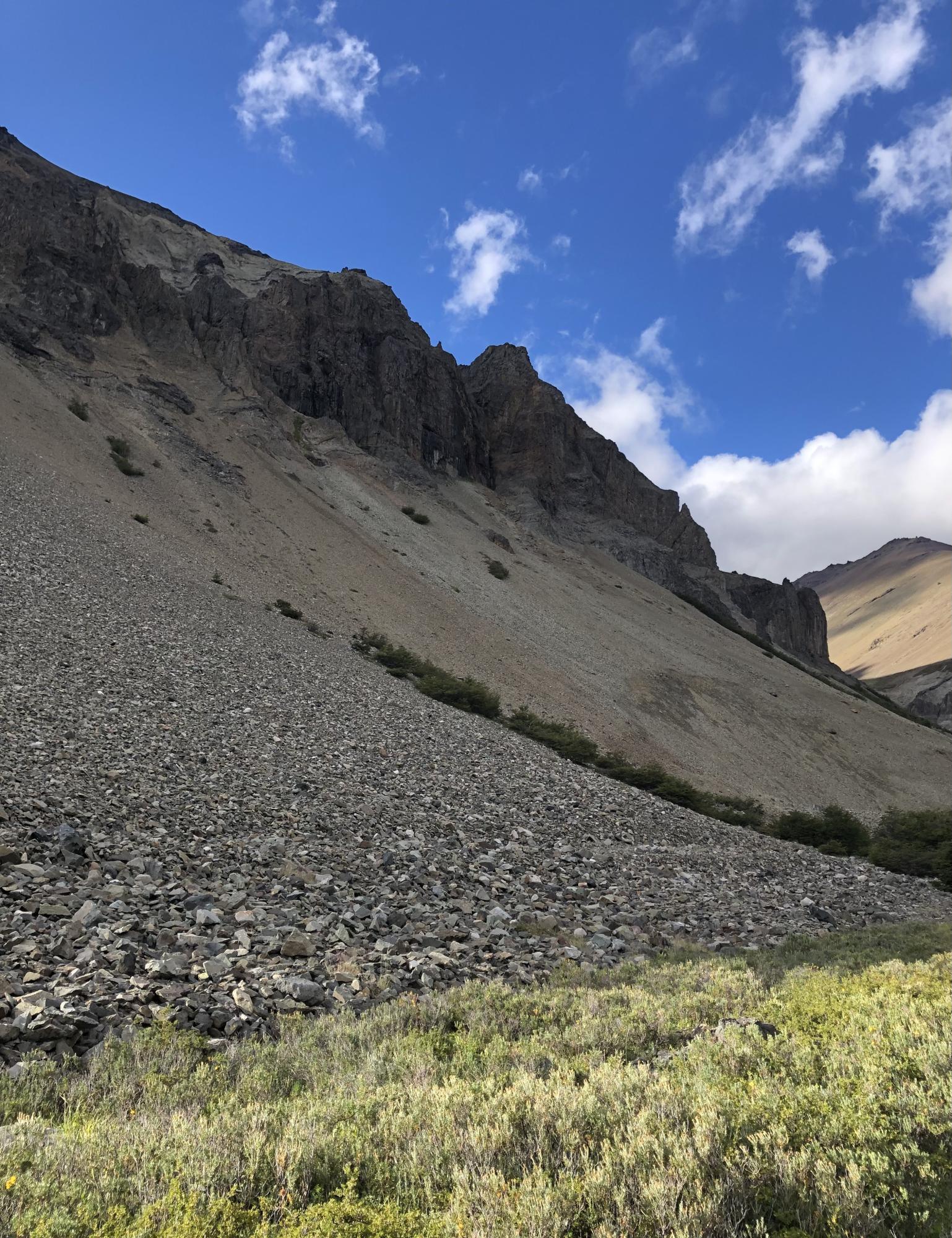
Hold on - hairpins! Camera time!

In all it was a feast for the eyeballs.
Puerto Cisnes (“swans port") was a cute town on the Puyuhuapi Channel. It’s more of a maritime than tourism town, with its ports and commercial vessels. This gave it a nice relaxed feel.
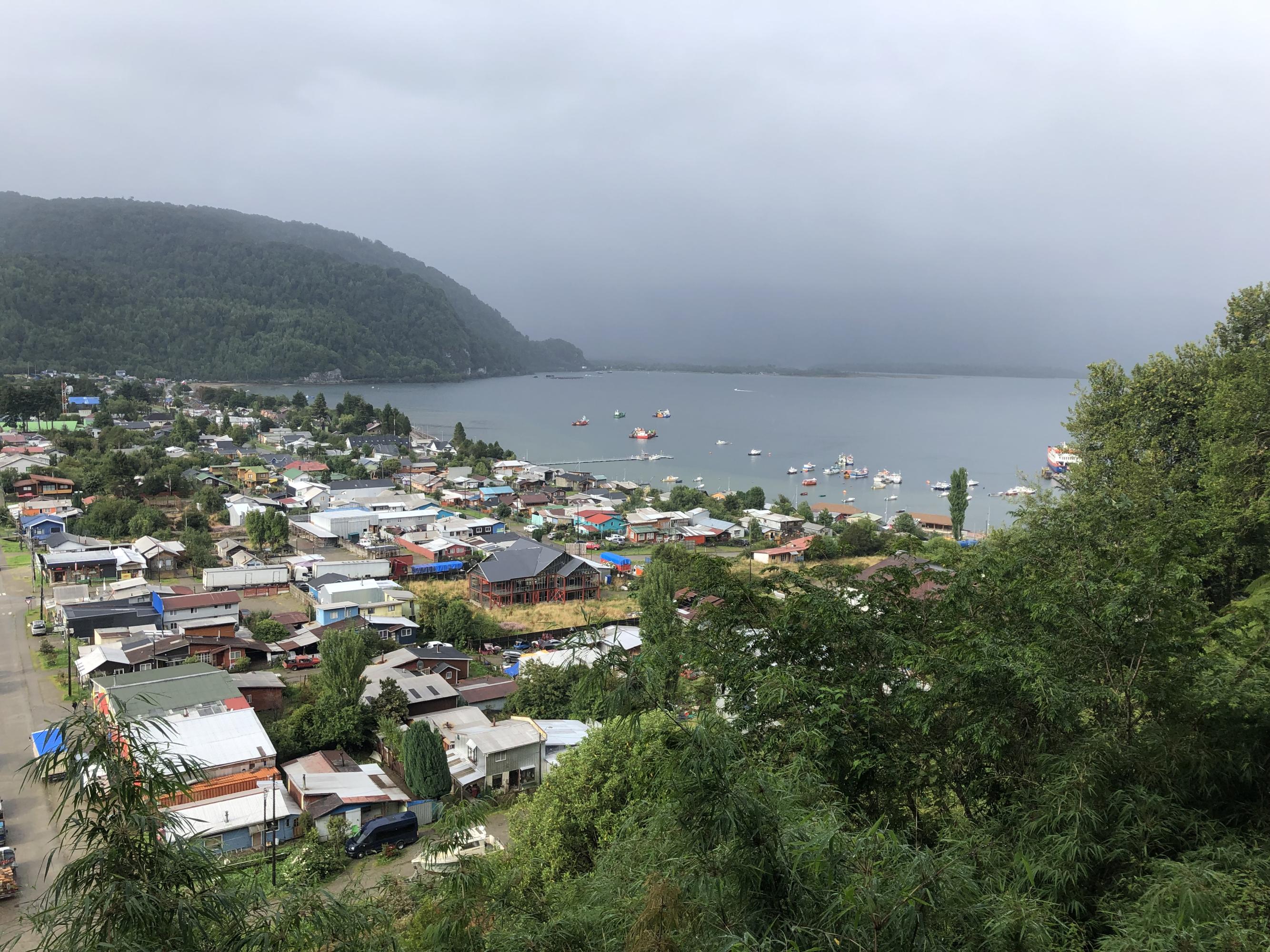
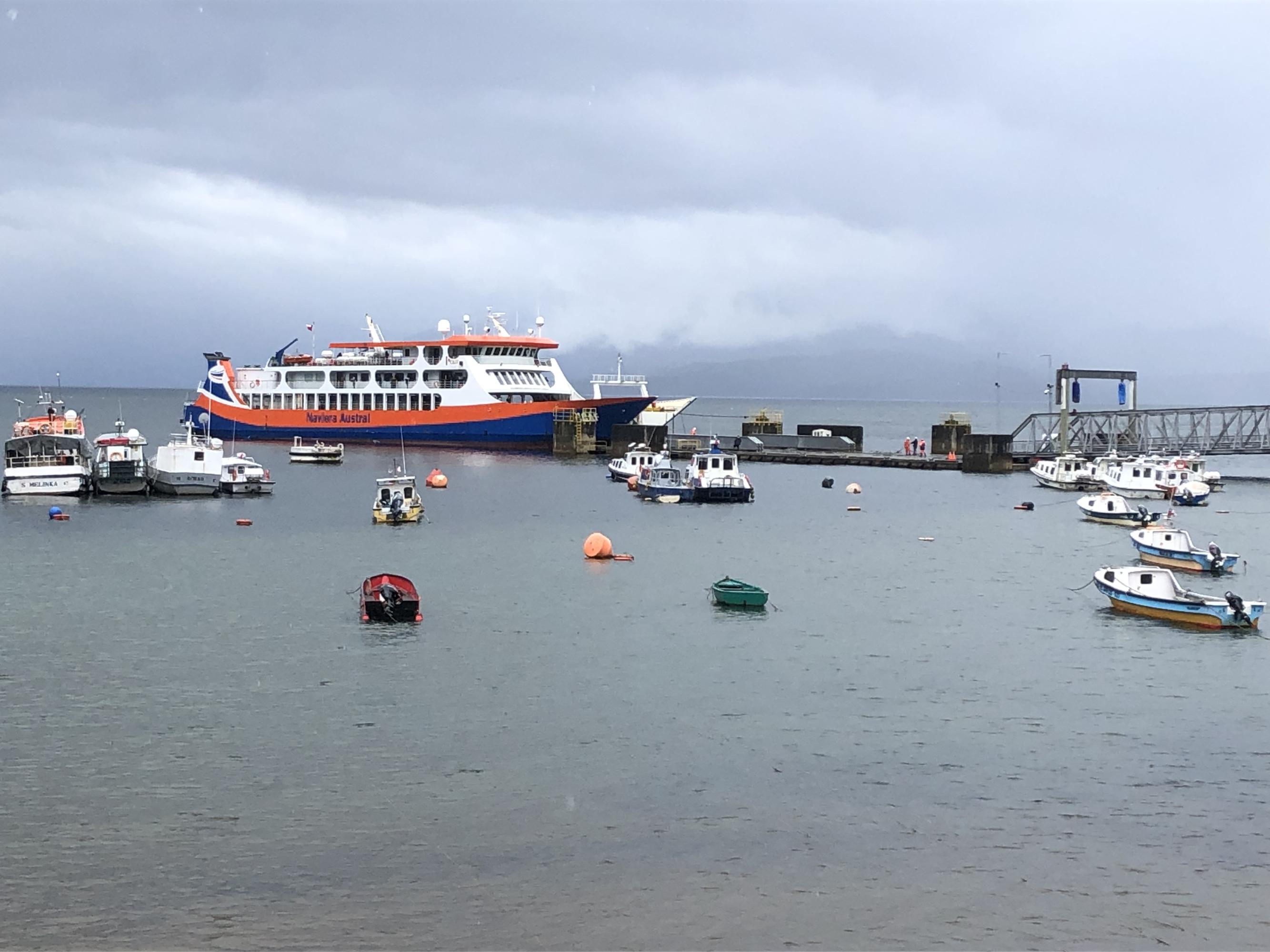
Coyhaique was charming for a decent sized city.
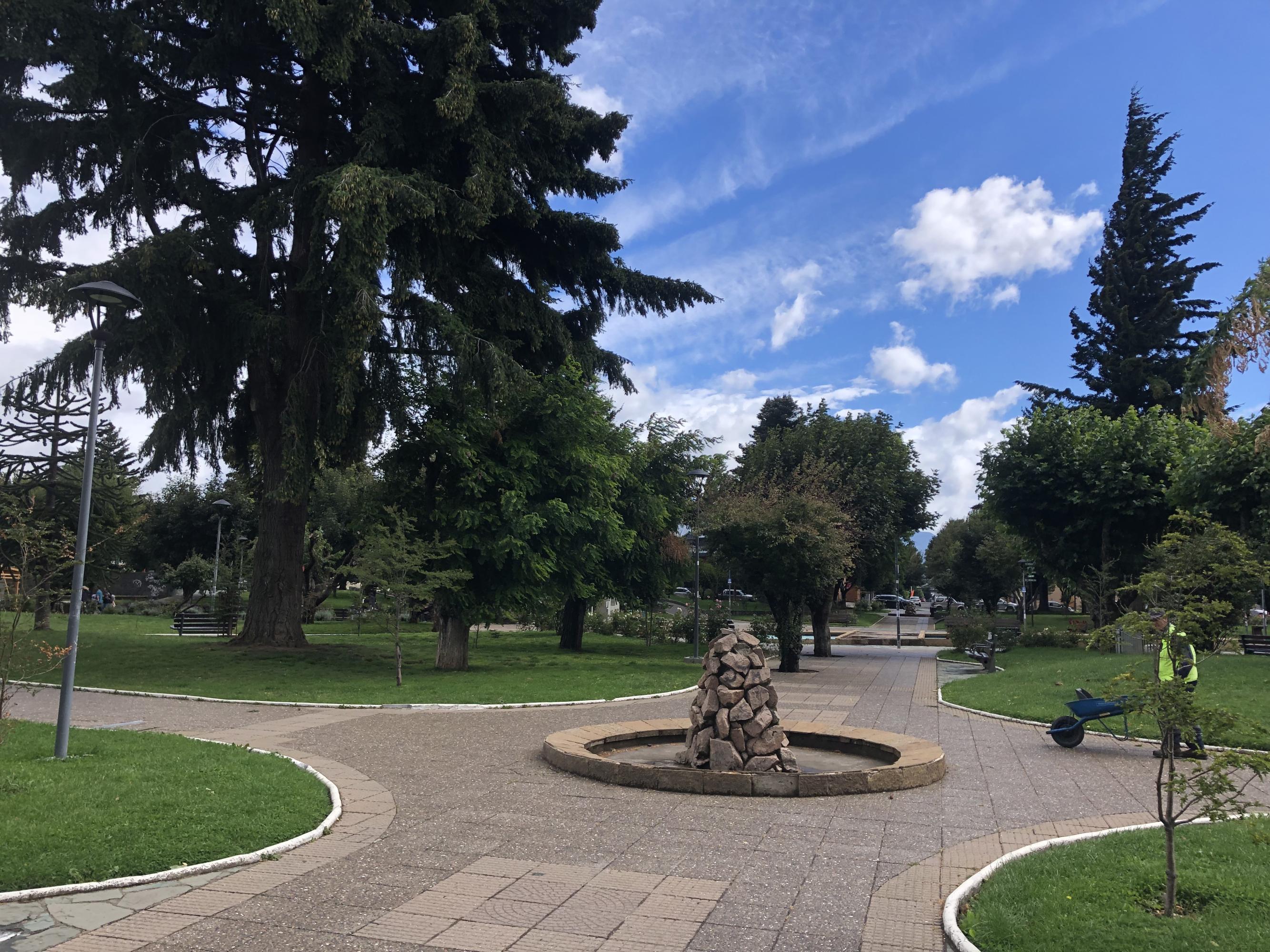
They play a big game there.

In Coyhaique were two Argentinian riders Raul & Andrés on CF Moto 400s. Super friendly blokes, we talked at length about the new Chinese brand.
Waiting for a burger that night I spoke with another Andrés, a psychologist working at an Aussie owned mining company in Chile. He was passionately involved in a rugby program for kids and relished practising his English.
These little interactions have often been the most uplifting parts.
Cerro Castillo had been highly recommended online as a decent hike. It can be reached via either of two paths. A park ranger fellow suggested the southern one for a better campspot but the northern for a hike as the southern was too tough. So I took his advice on the campsite.
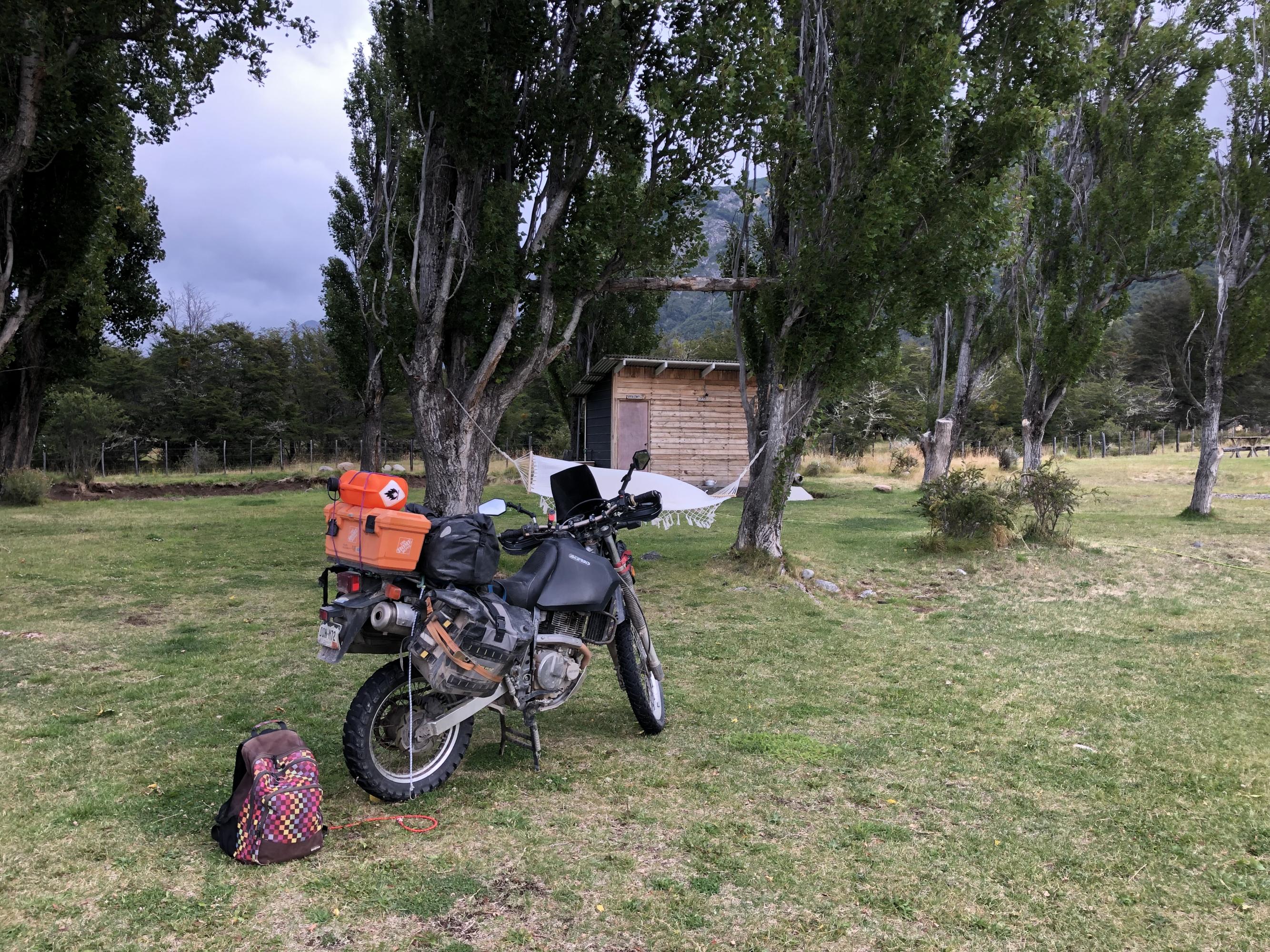
That evening a family with little tackers returned down the allegedly tough path. It couldn’t be that bad then could it? That park ranger must have been allowing for the lowest common denominator of walker.
Stuff it, next morning I started up the southern path. All was well for some kilometres, just a decent climb in light woods.
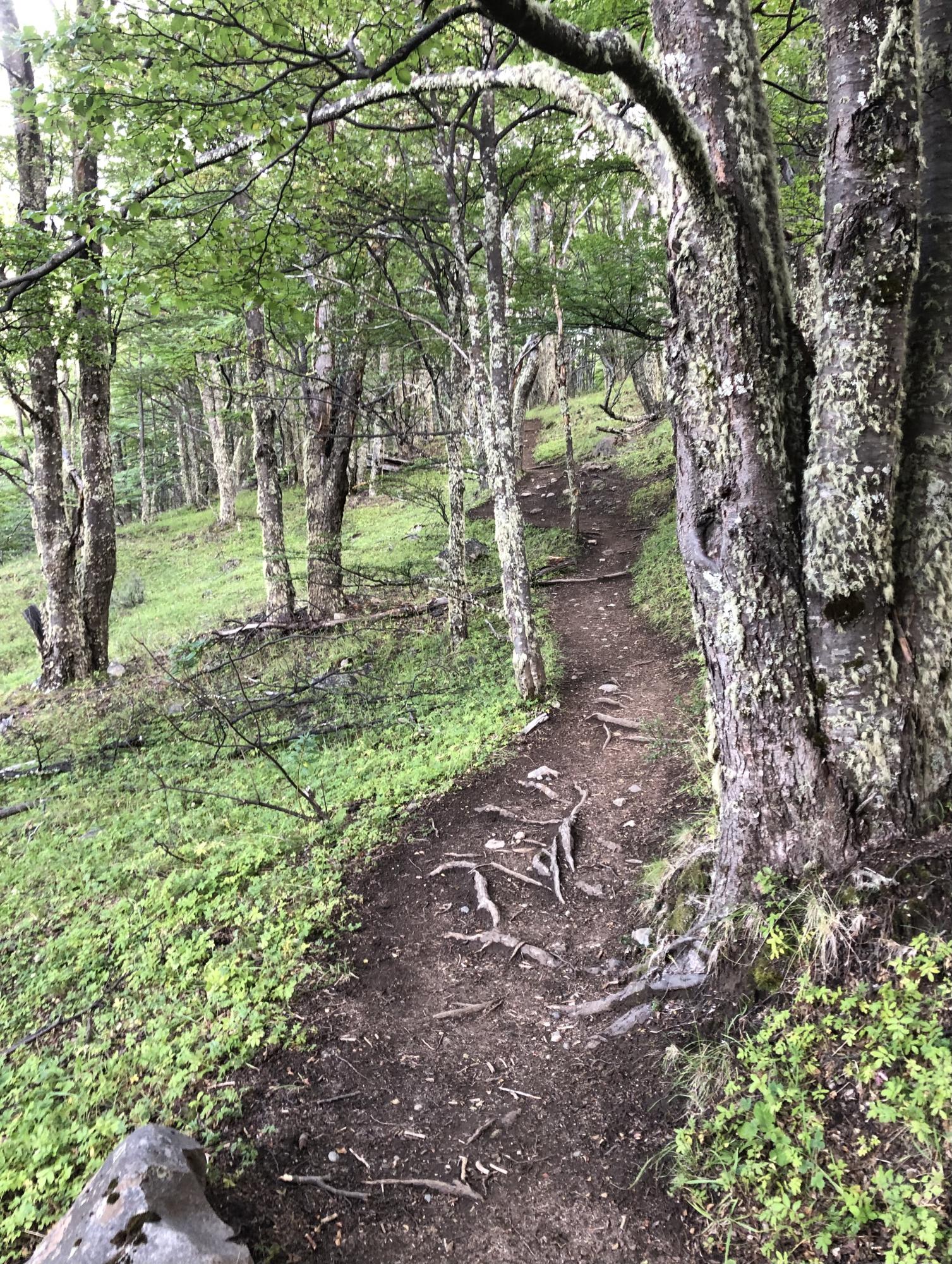
The views back to town and the campsite were ace. The rainbow told me there was no danger of the tent being flooded.

I should have heeded this sign. “Don’t cross if windy (you idiot)”.
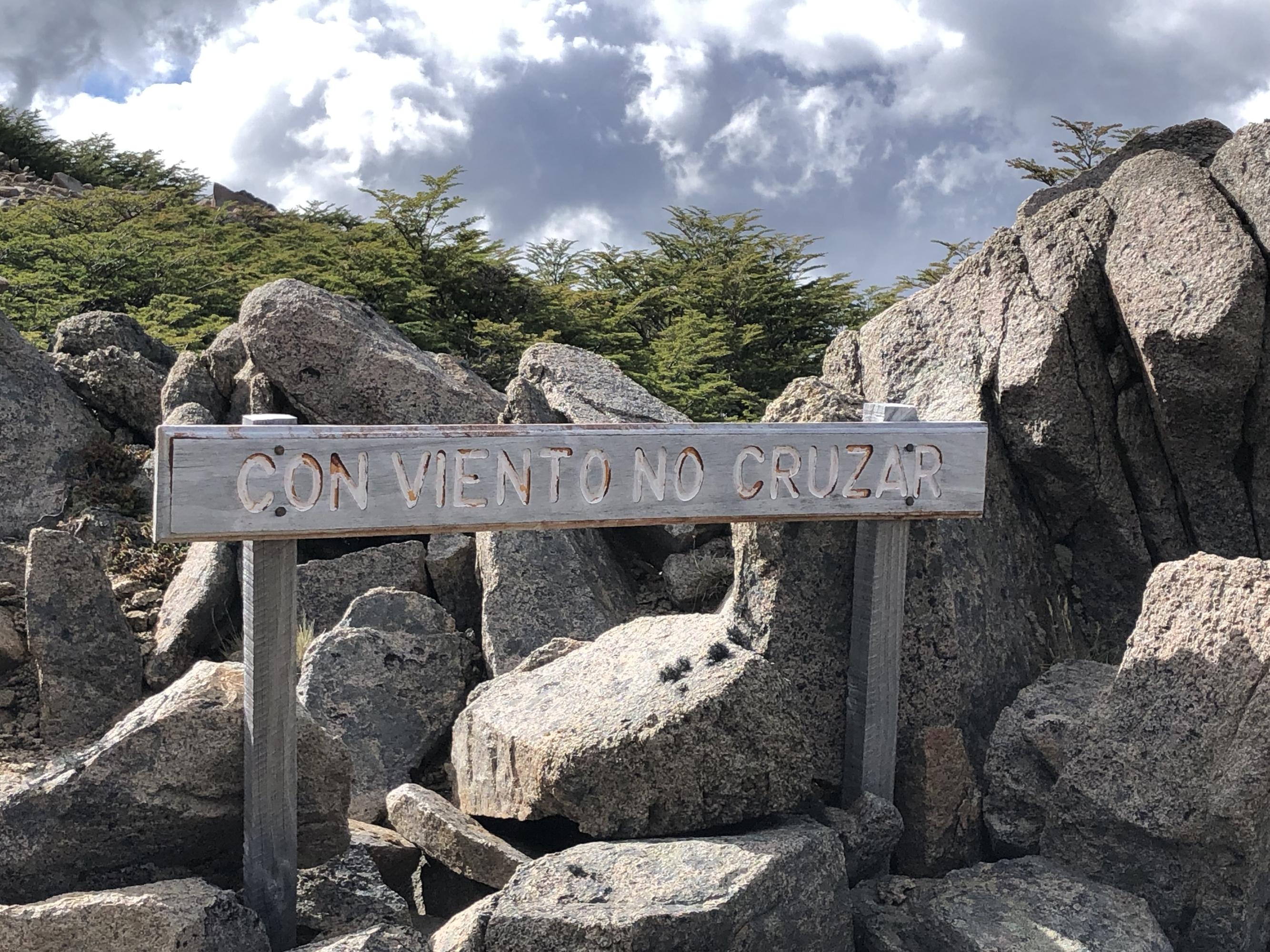
Above the tree line it was murder. I’ve never walked in such strong wind. The last hour was spent crawling (often literally - too risky upright) over a hill of jagged rocks, the path hardly discernible.
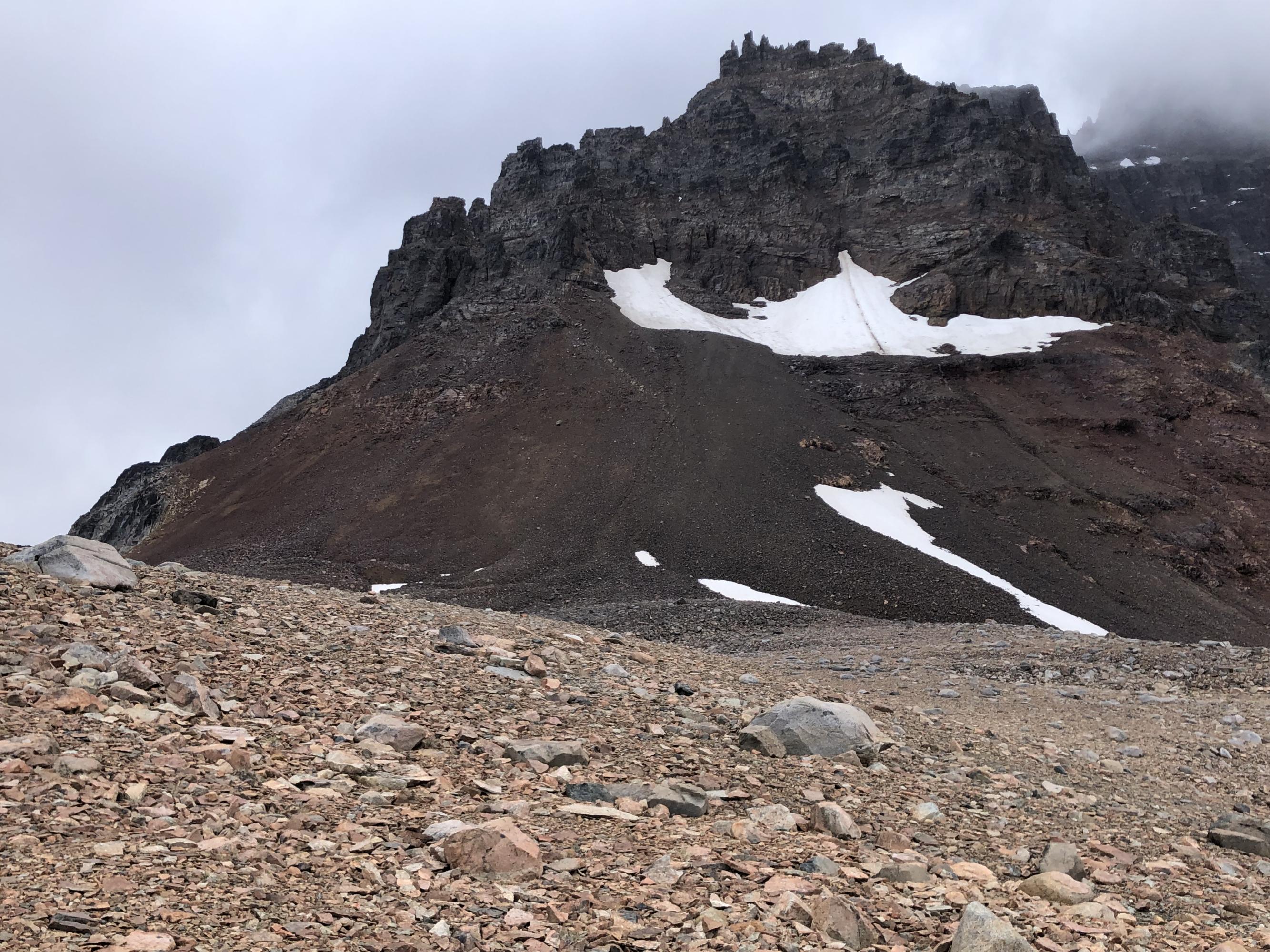
Rain and hail didn’t help.
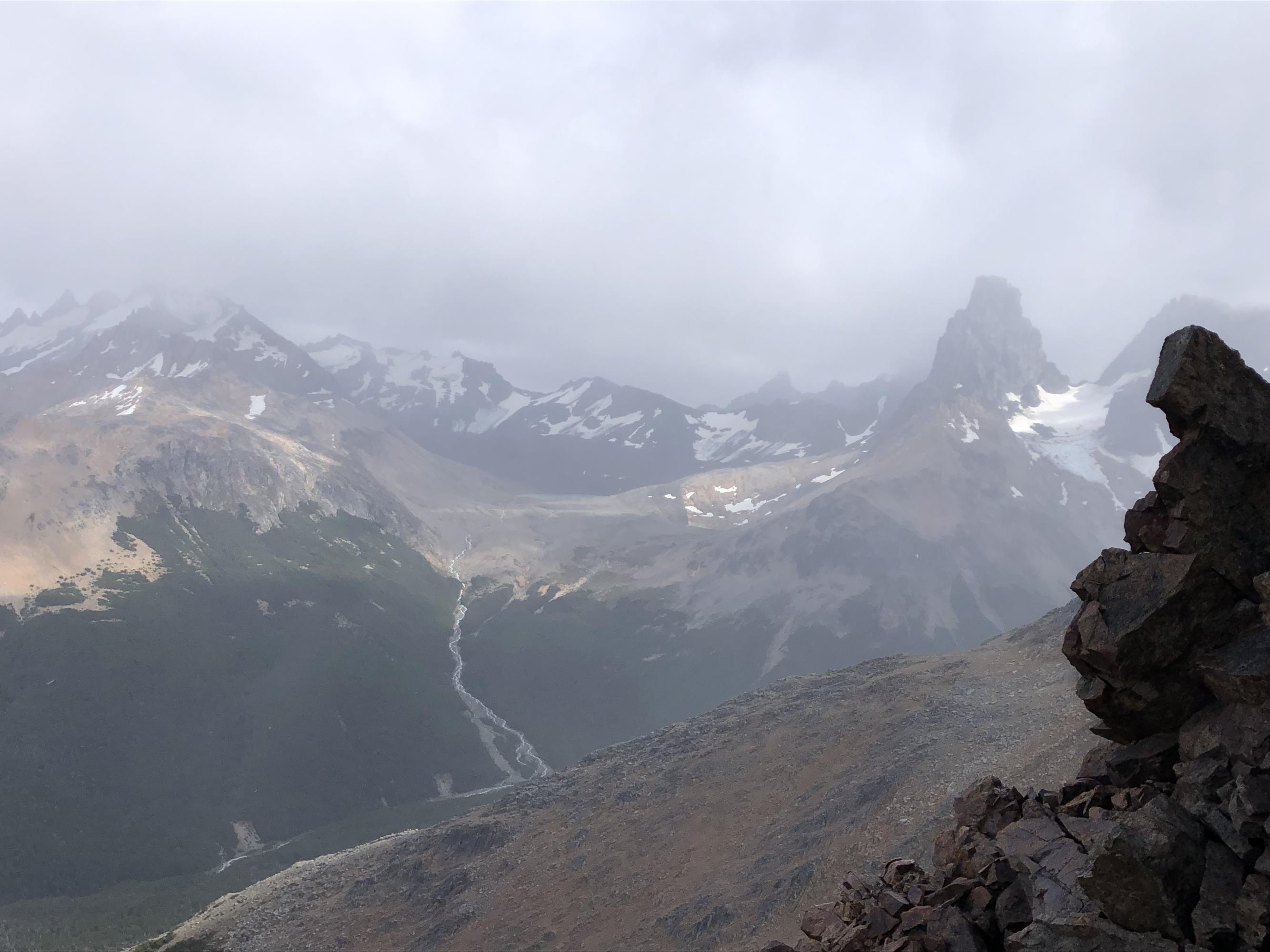
Once over the local rocky peak, the lagoon was on show, melt water running down from all that white nestled amongst the rocky crests.

Click here for a spin around with awful audio
Only seven other lunatics had shared that southern path, where scores had come up the suggested northern route. No wonder too, it was about a billion times easier.
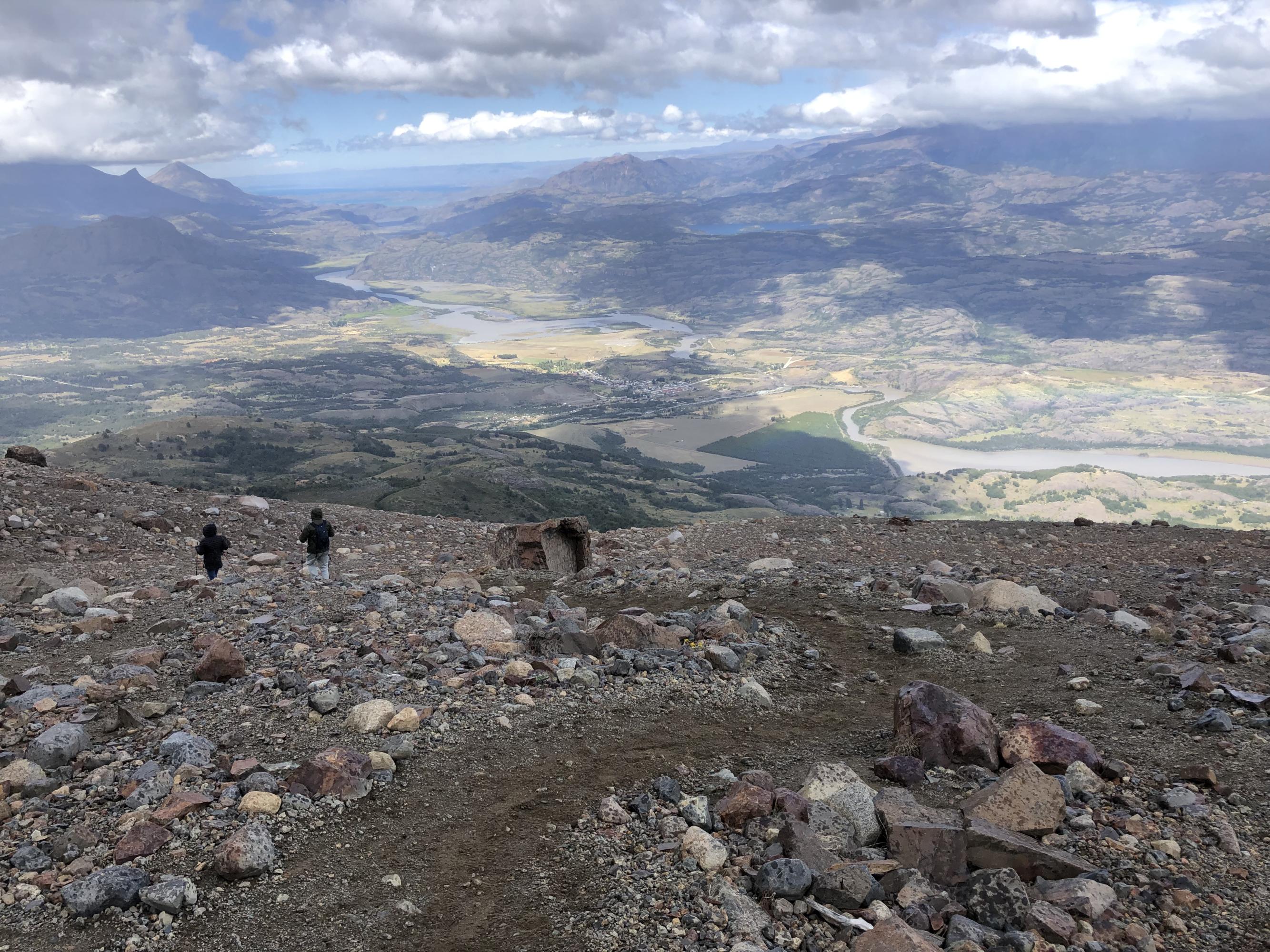
A couple of days later I returned past Cerro Castillo. My old friend was majestic in afternoon sunshine.
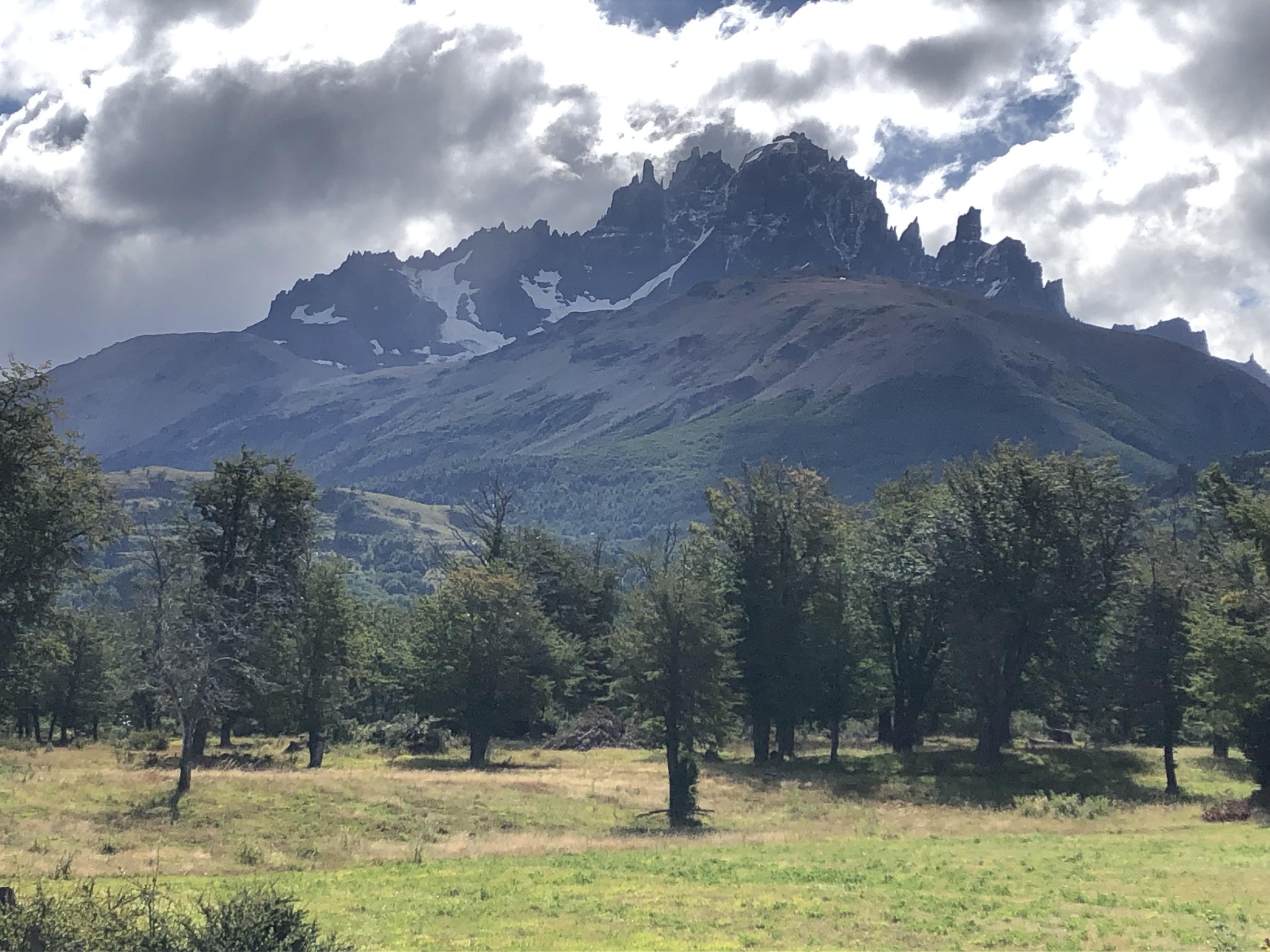
Patagonia gets a lot of weather.
In particular wind.
At a roadside lookout I paused for a final photo of Cerro Castillo. Stationary, motor off, two feet squarely on the deck, the breeze pushed me over.
Folk helped me right the bike and move it into the lee of a family’s ute. After the family departed, it rocked like buggery, threating to fall on the left side even with the stand down. Crazy.
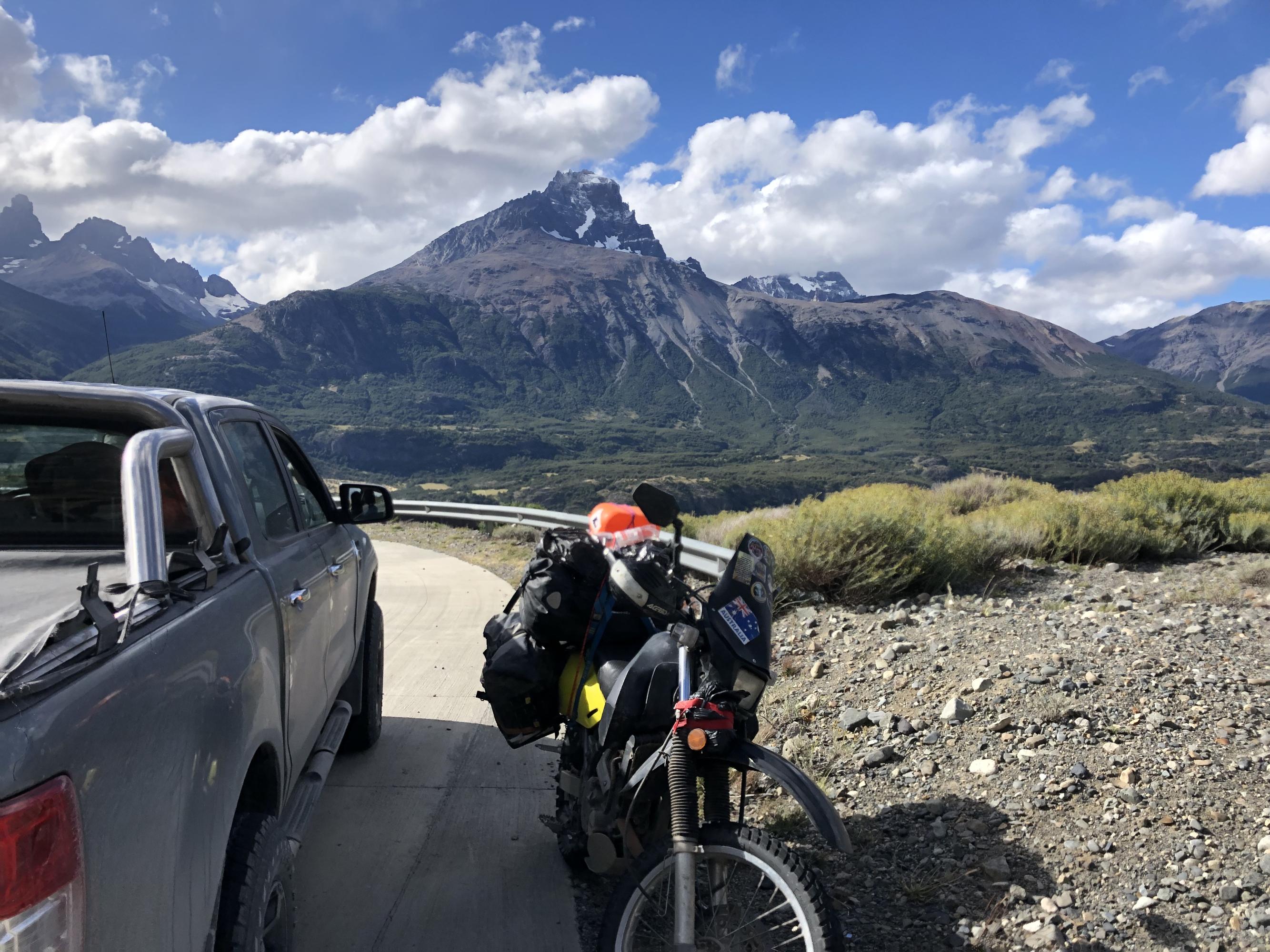
I walked it back next to the road, then further on by a hundred metres, hoping that hugging a hillside might reduce the ferocity enough to get moving safely. In the end I just had to bite the bullet and go. With momentum things improved. Rapid corrections and great car close to oncoming traffic were still required.
The “huemule” is an endangered native deer. These creatures wandering casually across the road was a coup.
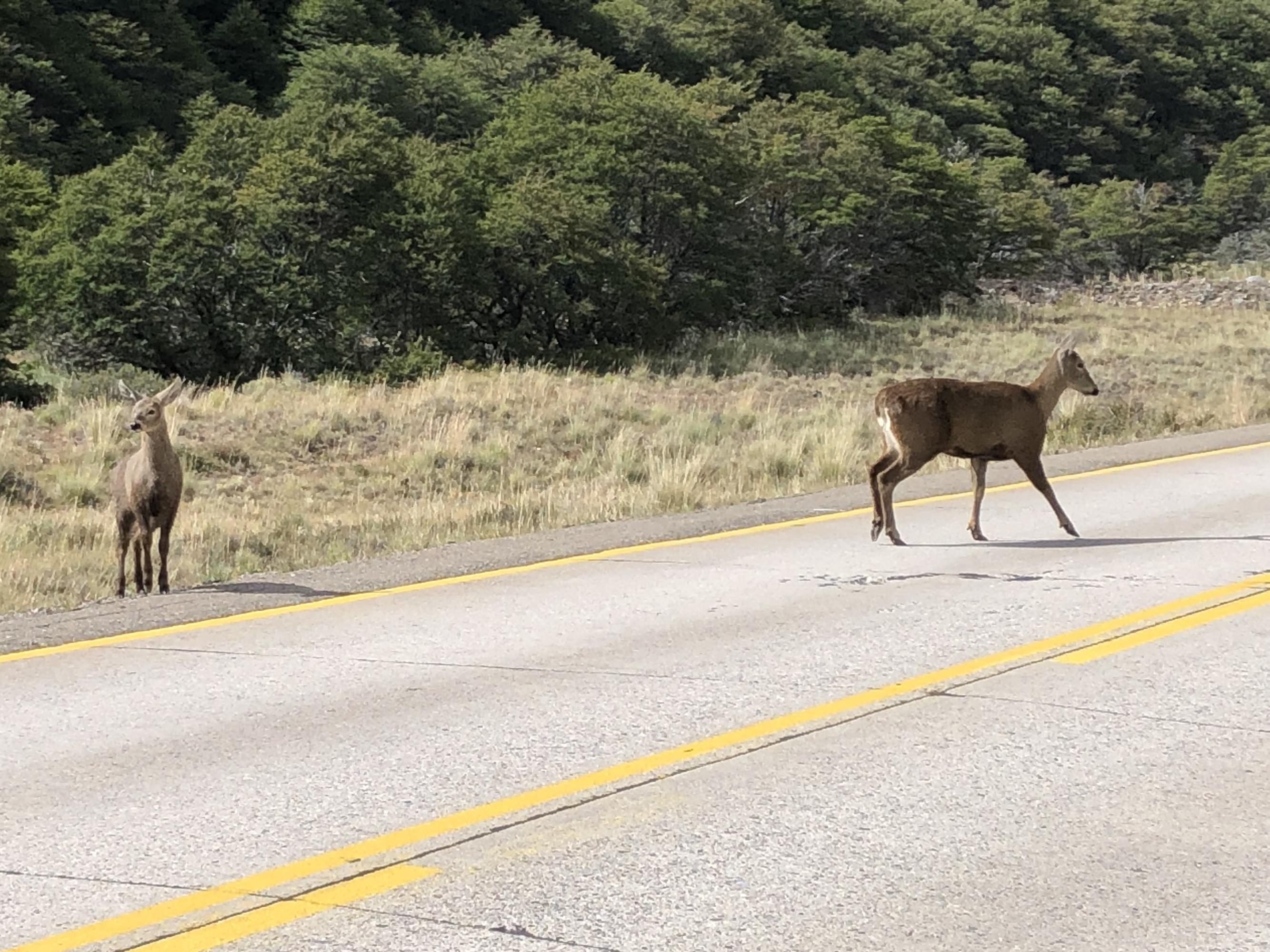
Over a few days I made a series of dumb decisions that left their mark on the trip.
First up I was persuaded to take a bed in a dorm in Rio Tranquil. The hostel was nicely presented and the hosts charming, so it seemed a good idea at the time (the drunk’s excuse).
However I’m a bloody awful sleeper in ideal conditions. Three other snoring strangers close by was awful. I got up and lay on a couch around 2am. At 5am alarms started and before the sun bodies rose, clatter clatter thump thump.
No sleep for Gav.
In the delirium following I left a computer tablet behind, called back that night but no, it had not been seen. Annoying with some notes not backed up, but not the end of the world.
Then I really stuffed myself up.
In Latin America, WhatsApp is universal. It’s by far the main communications tool for friends, businesses, government. I’d accumulated a heap of contacts, message exchanges, useful info, photos and videos via WhatsApp over nine months.
Being a clever computer nerd, the tablet had been a backup for my phone. Better get another backup quick smart. In all the fatigue I managed a vice versa cock up, clobbering all that collected info. Some computer expert.
Next idiotic action: ignoring an increasingly difficult main zip on the jacket.
I should have addressed this while in a larger centre. Instead I just kept using it with greater force. Clunk! The slider was stuck half way, the zip halves separated. It took Vice Grips to shift the slider and permit exit from a textile straight jacket.
Closing the jacket was a mindless habit, done a million times. Even knowing the zip was rooted I kept trying it without thought. Vice grips again. Removing the slider and placing it in a pocket cured that.
What to do? Dots on the map had become pretty small; I could return to a city for a possible fix, but days would disappear.
I decided screw it - just put the wet weather jacket over the top to keep things in place. Occasionally too hot, a pain for accessing wallet and phone in inner pockets but workable. Future Gav would figure out a solution.
Stay tuned on the zip saga.
Light relief in all this heartache were the marble caves.
Lake General Carrera is Chile’s largest and rather beautiful.
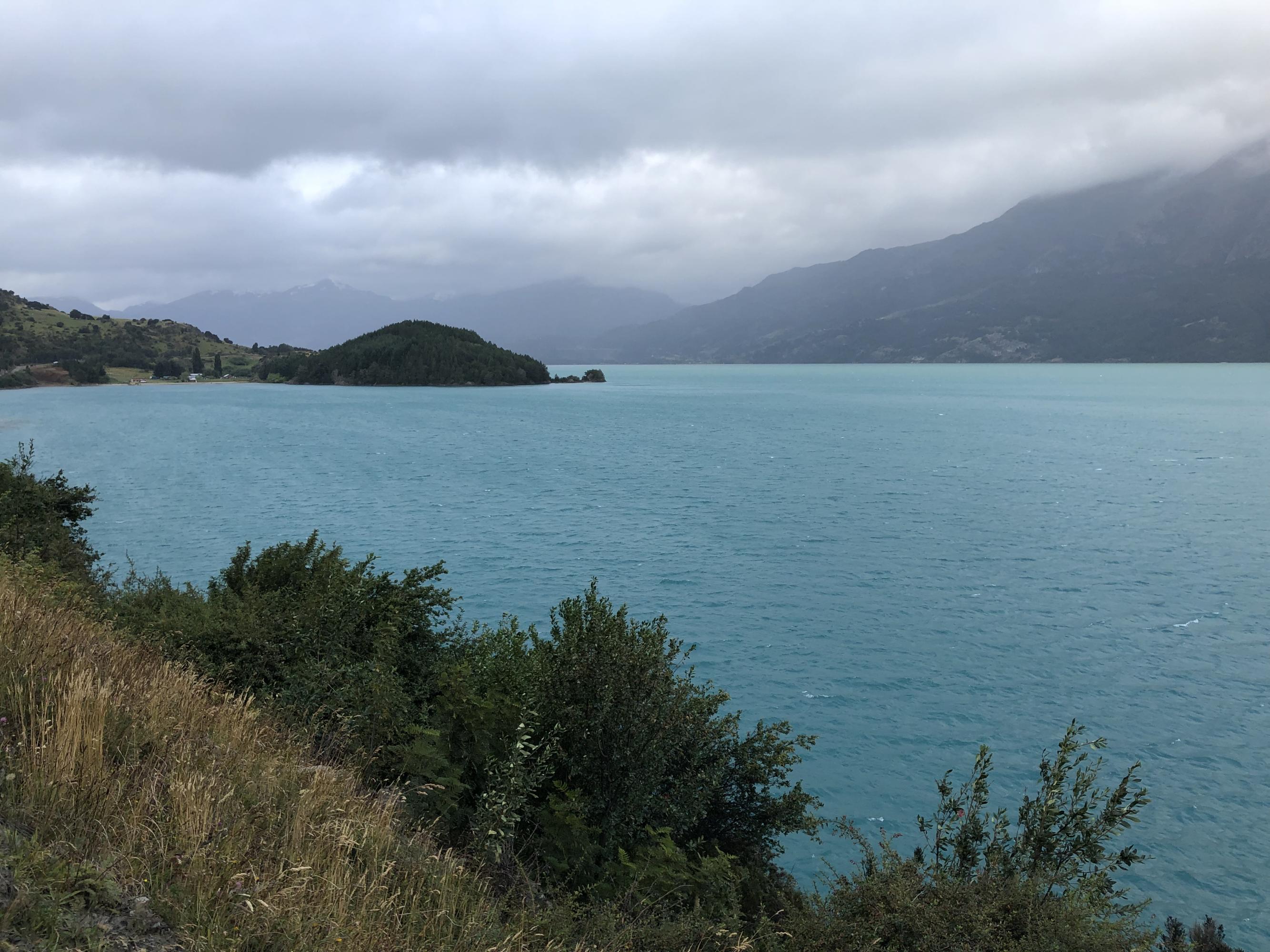

Out of Rio Tranquil marble chunks sit proud of the water, their bases eroded away by the water over the millennia.
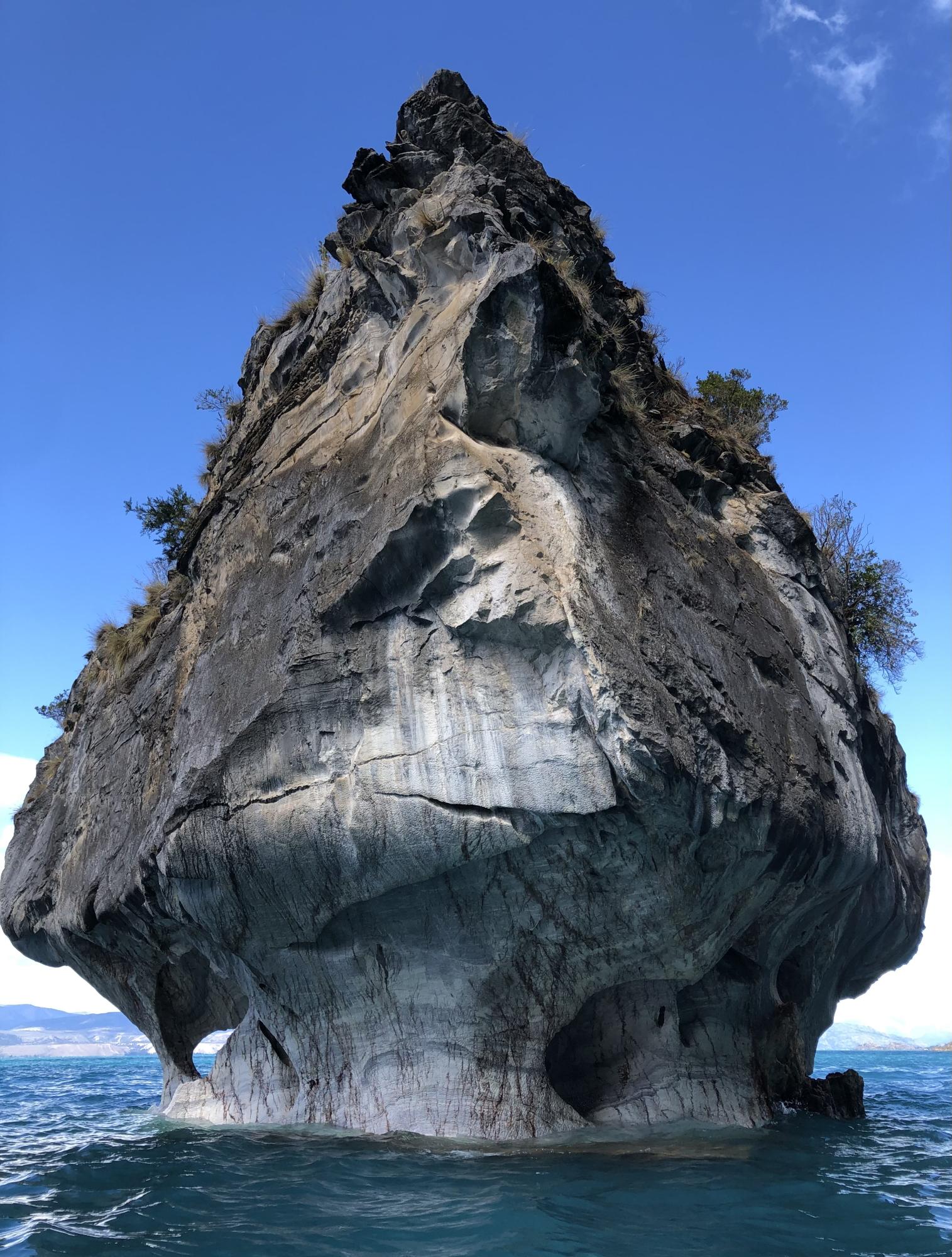
Most tourists see them from motor boats. Fair enough, but wow it cannot be as uplifting as being in a kayak.
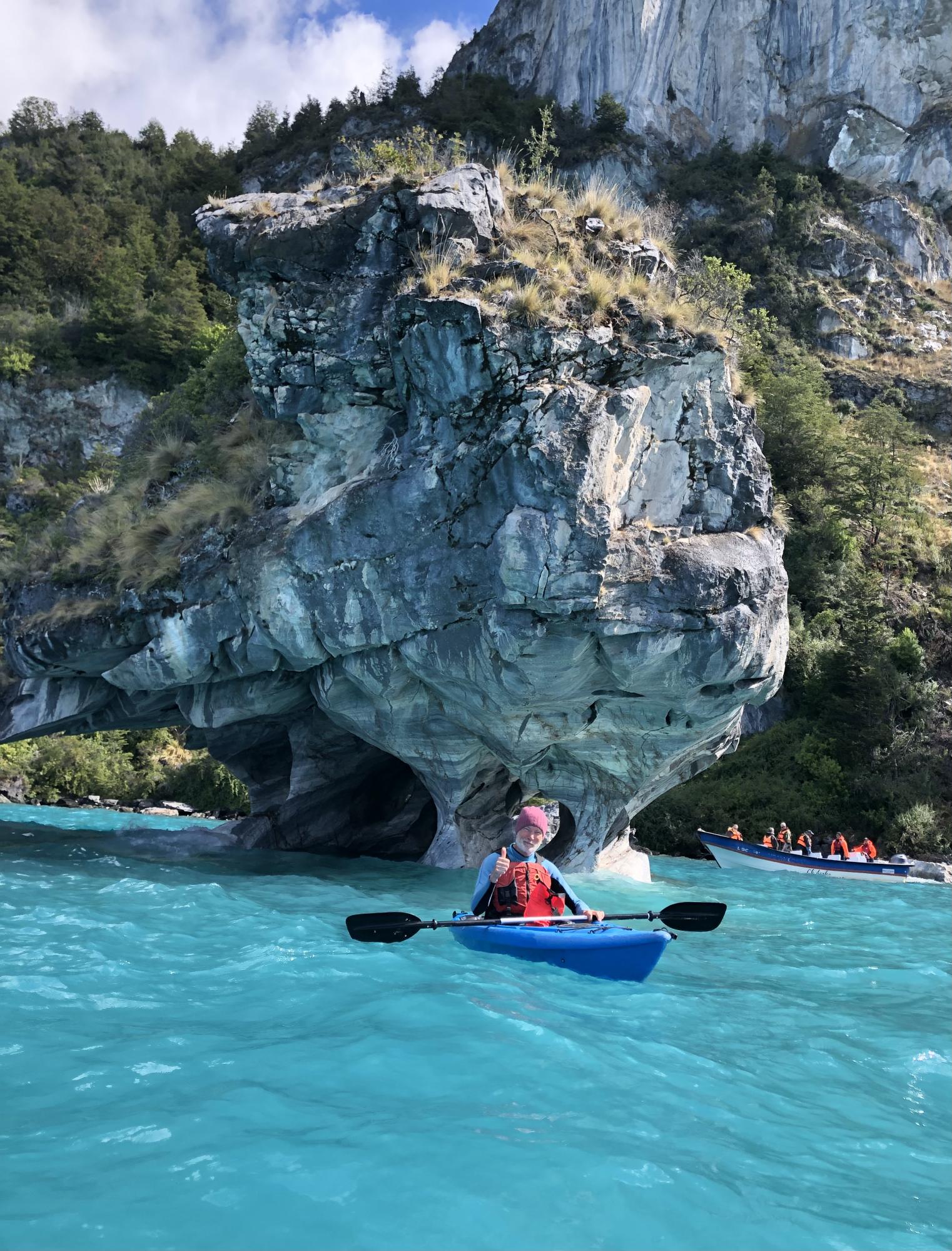
Guide Pia and I paddled twenty minutes to reach them, chatting about things and stuff, then meandered around and through the openings.
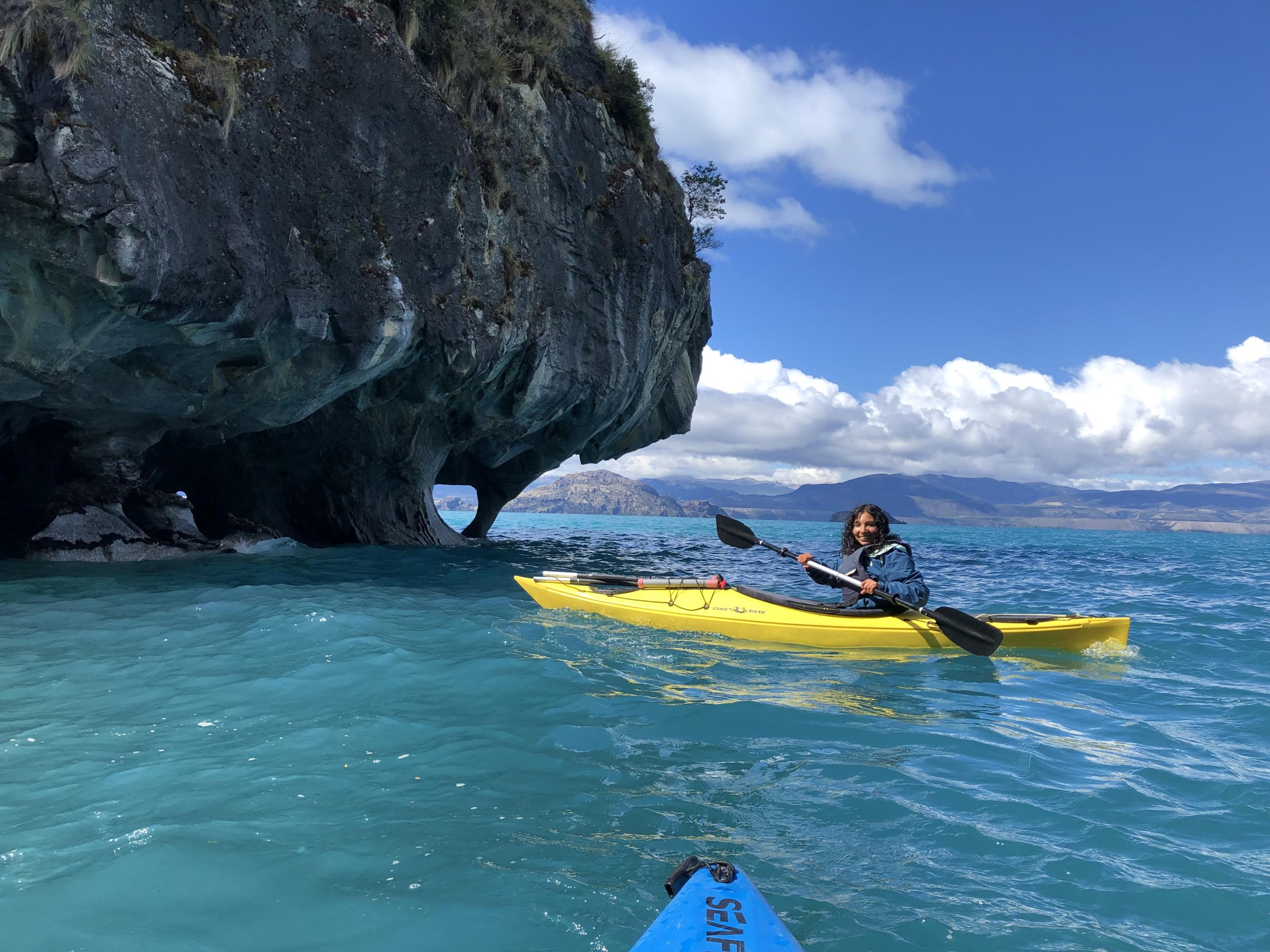
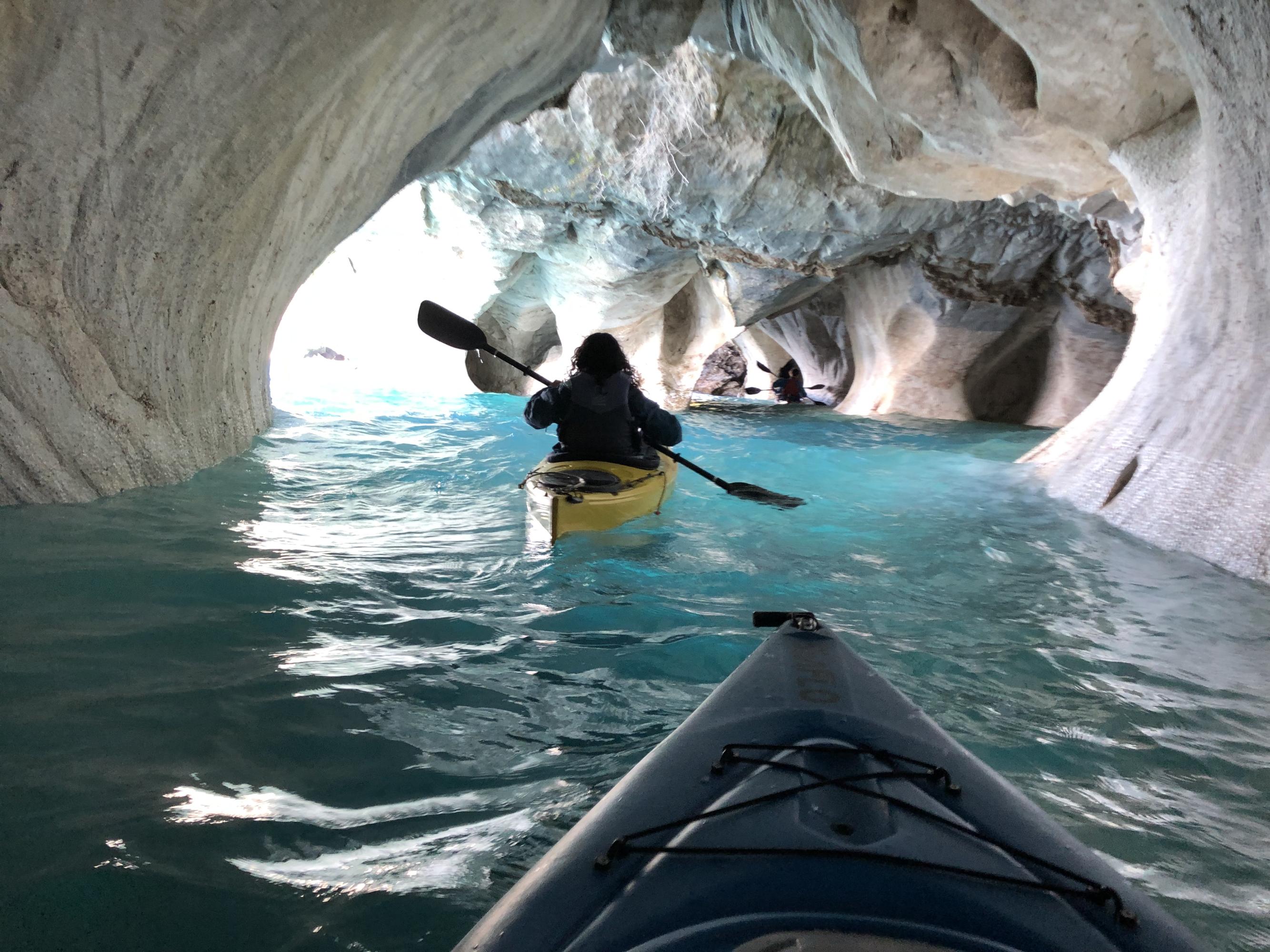
Absolutely magic.
Back on the Carretera Austral, dry days plus many cars and trucks created huge dust clouds. Often the road ahead was completely obscured. Unpleasant for motorcyclists, especially hard for bicyclists.
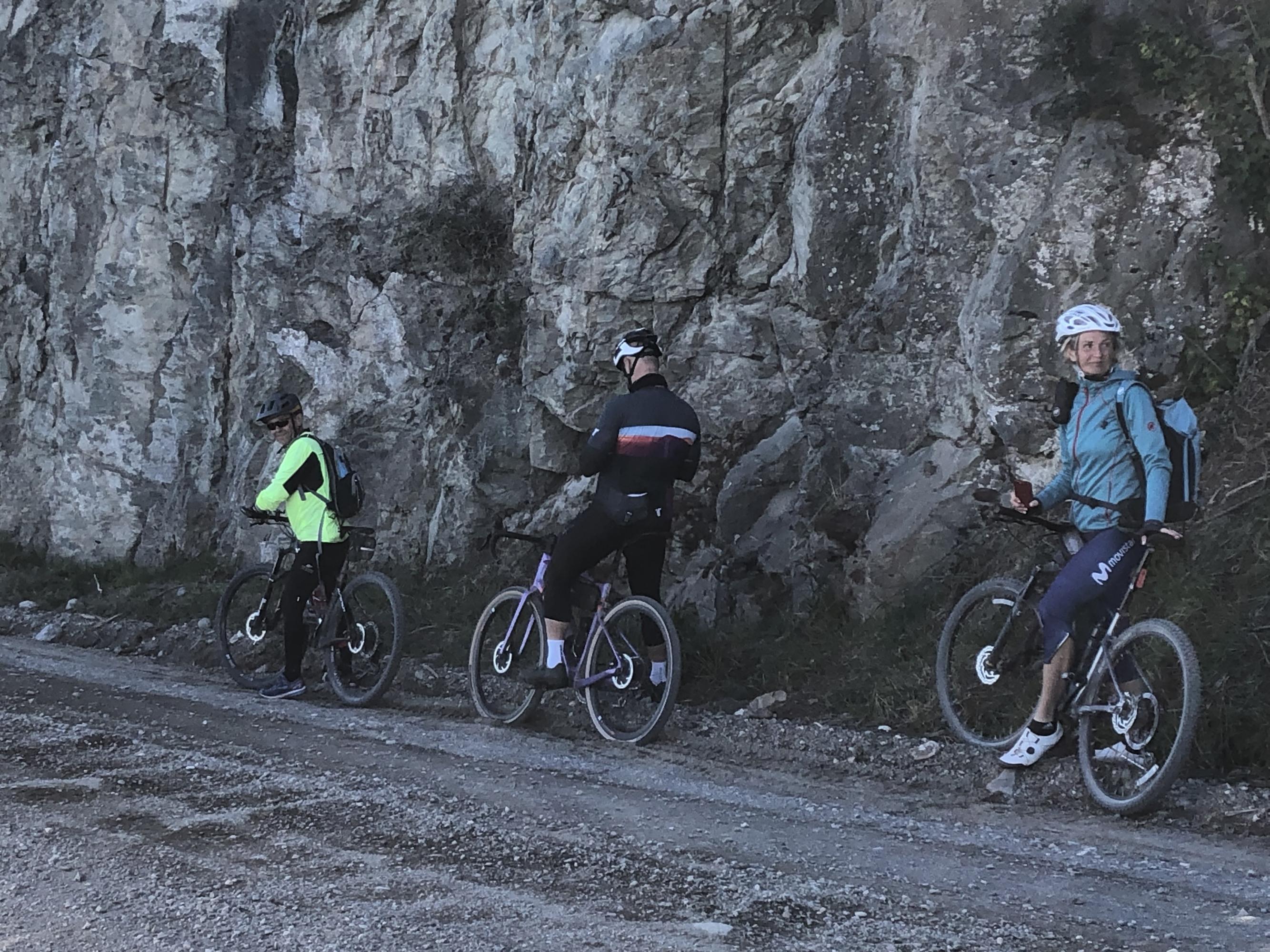
While lunching in the park post paddle, up came Raul that I’d met in Coyhaique. His mate Andrés had had a tumble off his bike, broken his leg and flew home to Buenas Aires. Raul was going to ride his own bike home then return to pick up his mate’s machine. Thousands of kilometres away.
There's a good friend!
The Austral is a dead end road. After the last hamlet Villa O’Higgins, options are:
- Do a U turn back north
- Take a two day ferry further south through an archipelago or
- Hike and ferry into Argentina (sounds fun, just not motorcycle friendly)
By Cochrane I was grumpy with ... well ... everything. Instead of going all the way to Villa O’Higgins I crossed back in to Argentina at Paso Roballo, the most southerly crossing off the Austral.
This proved to be an excellent decision.
The first delight was crossing Patagonia NP. Herds of guanacos were scattered throughout.
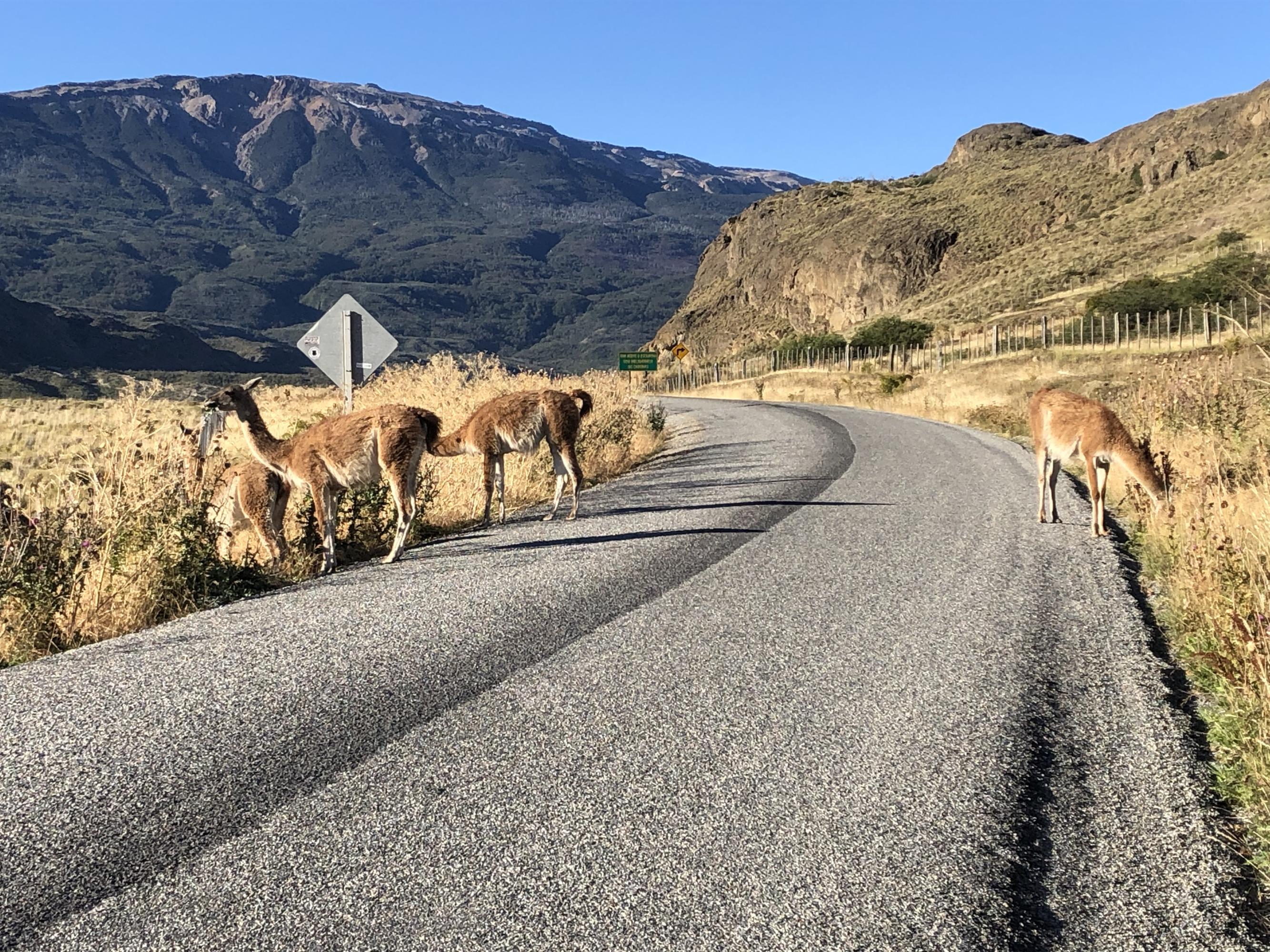
Guanacos are found at the bottom of South America. From then on guanacos became common. In comparison their cousins vicuña are found at higher elevations in the central Andes.
I love these little fellas. They have a small tail, are fairly uniformly coloured and for me resemble foals. They hang out in small herds, maybe up to a dozen.
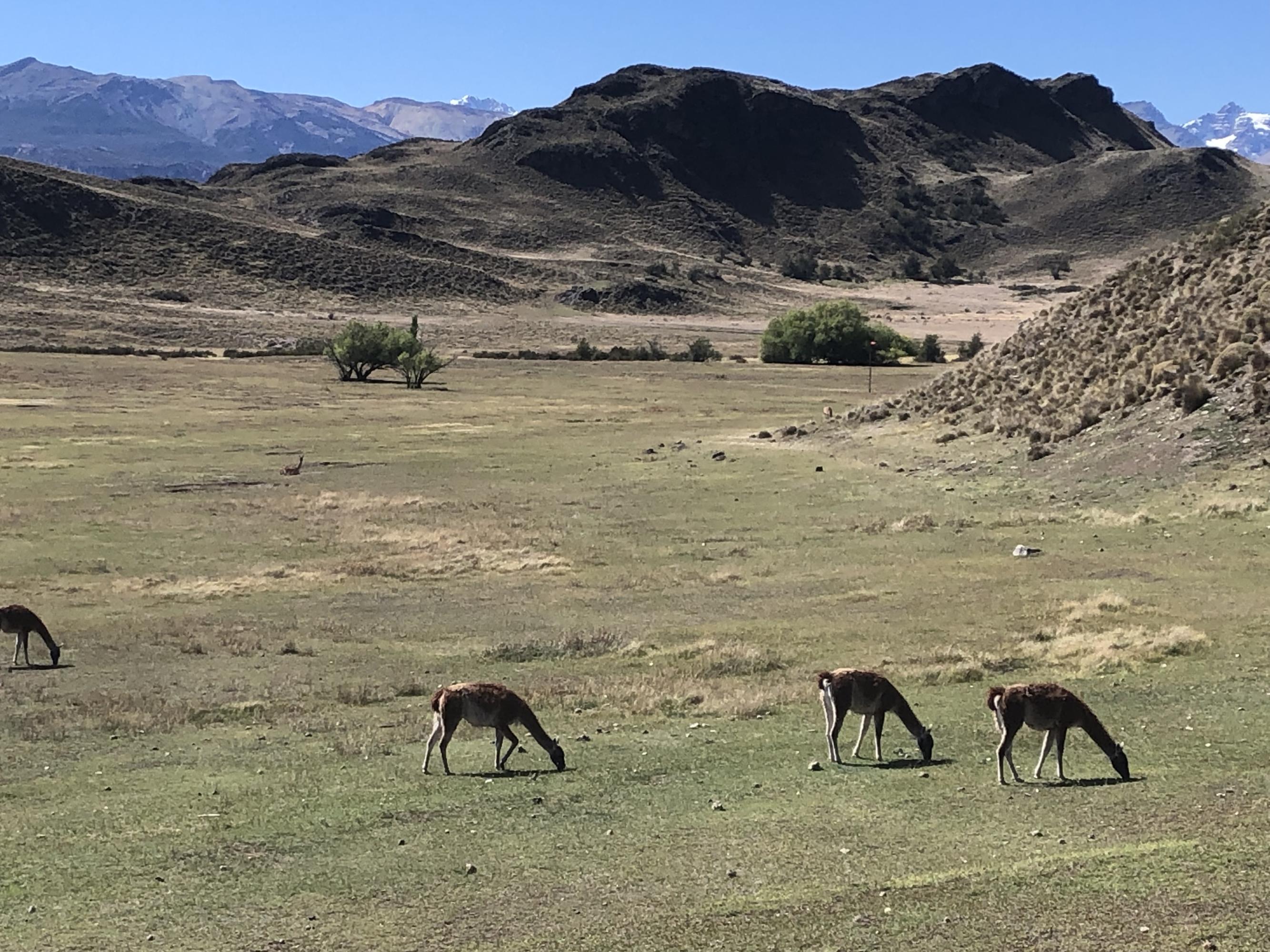
They must like their privacy: blast past at speed and they hardly move, but stop for a photo and they scamper off all of a twitch.
There were also my emus - actually rheas, related to ostriches, a chunk smaller though. These little guys might not fly, but they sure can run. It was hard to get a photo.
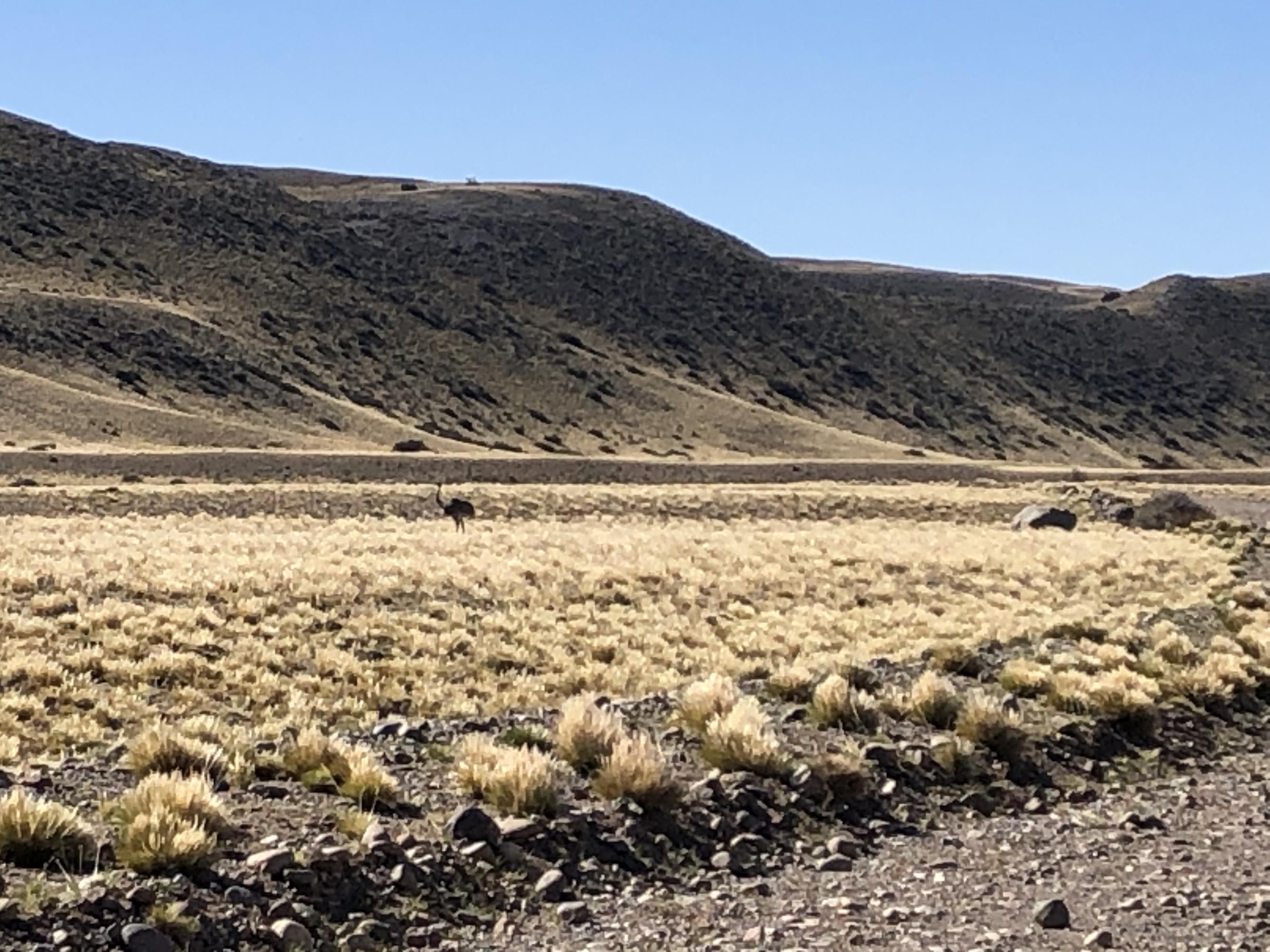
Told you they were small.
The landscape was glorious without being dramatic.

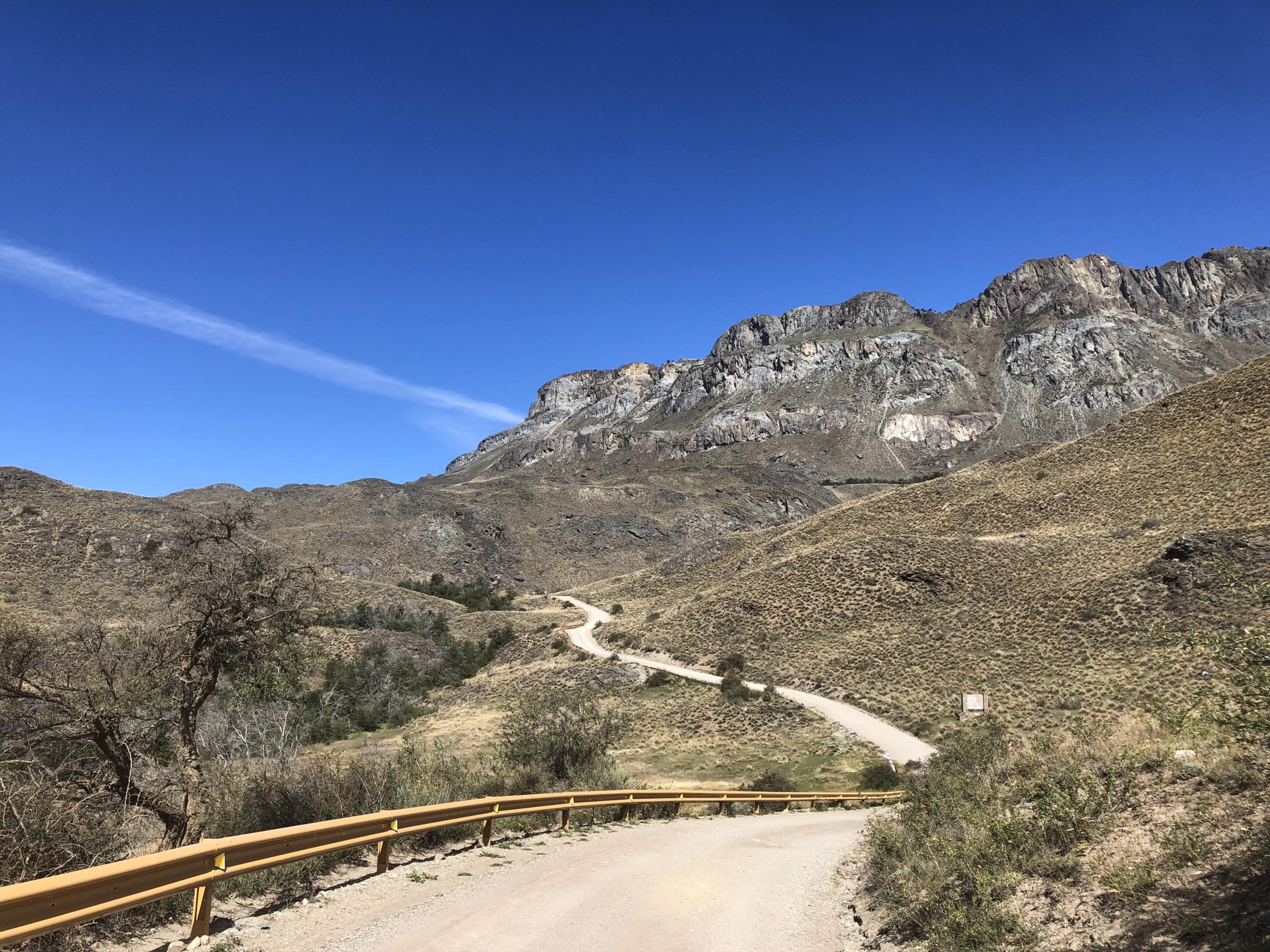
A shallow river suddenly brought back a memory of my little boys laughing and splashing in the Snowy River on an ancient camping trip. I stopped to dangle my feet and enjoy the memory.
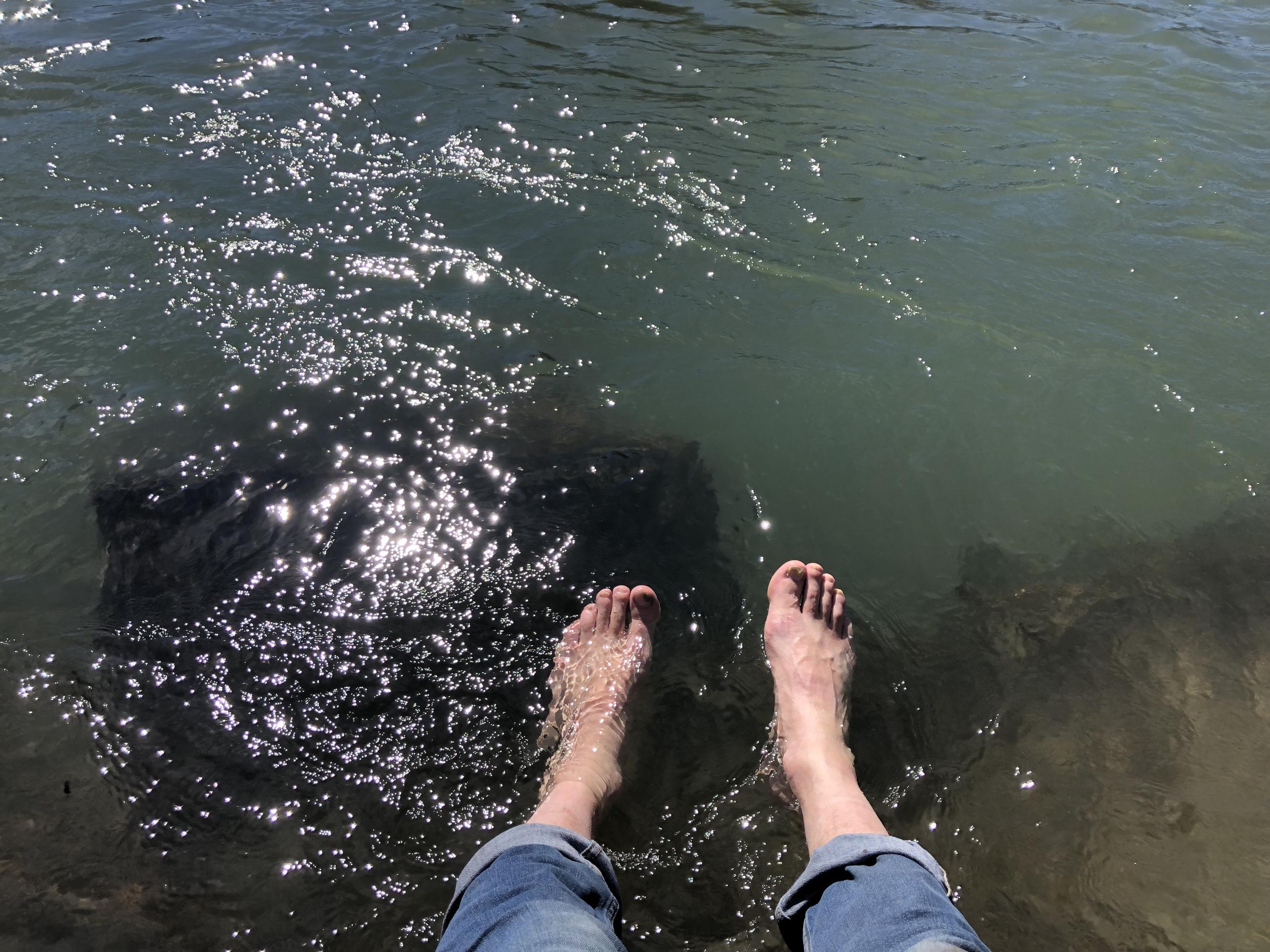
Best of all, it was peaceful: only one car until nightfall then two cars the next day.
The frontier was amusing. The Chilean side was manned by police rather than immigration staff. As such, they required an online police check that one was approved to leavetheir country.
When did you last see a sheet of carbon paper used? The Argentinian official used one between two paper forms, taking a full minute to tap the three pieces into alignment on his desk. He very deliberately hand scribed vehicle details on top, then equally deliberately stamped and signed everything. Not a computer in sight.
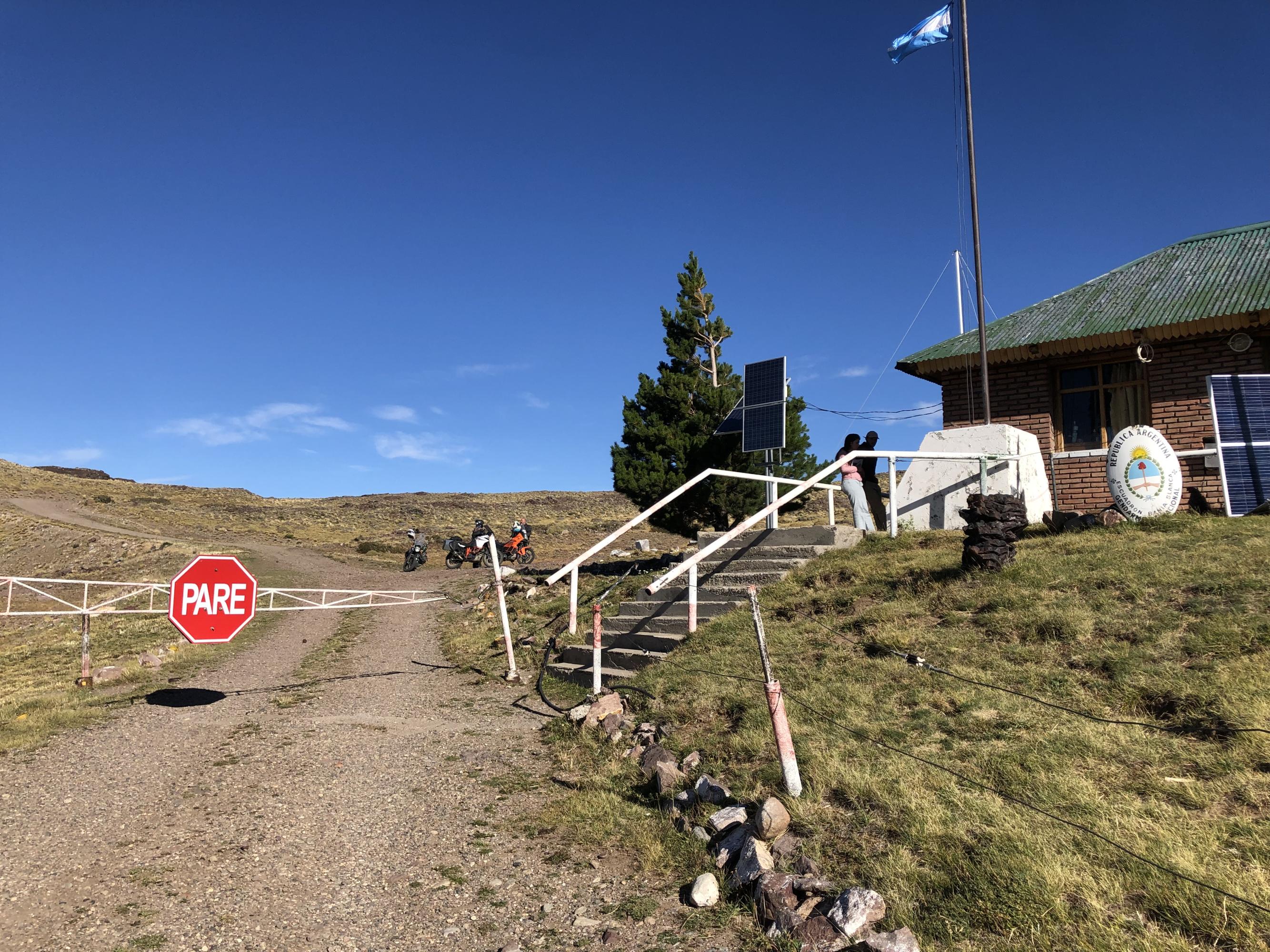
Overnight was a campsite on a bend in a stream. The arid land was suddenly green with grass and trees.

I could hear cows chomping in the dark through the nylon.
Next day, looking down on it all.
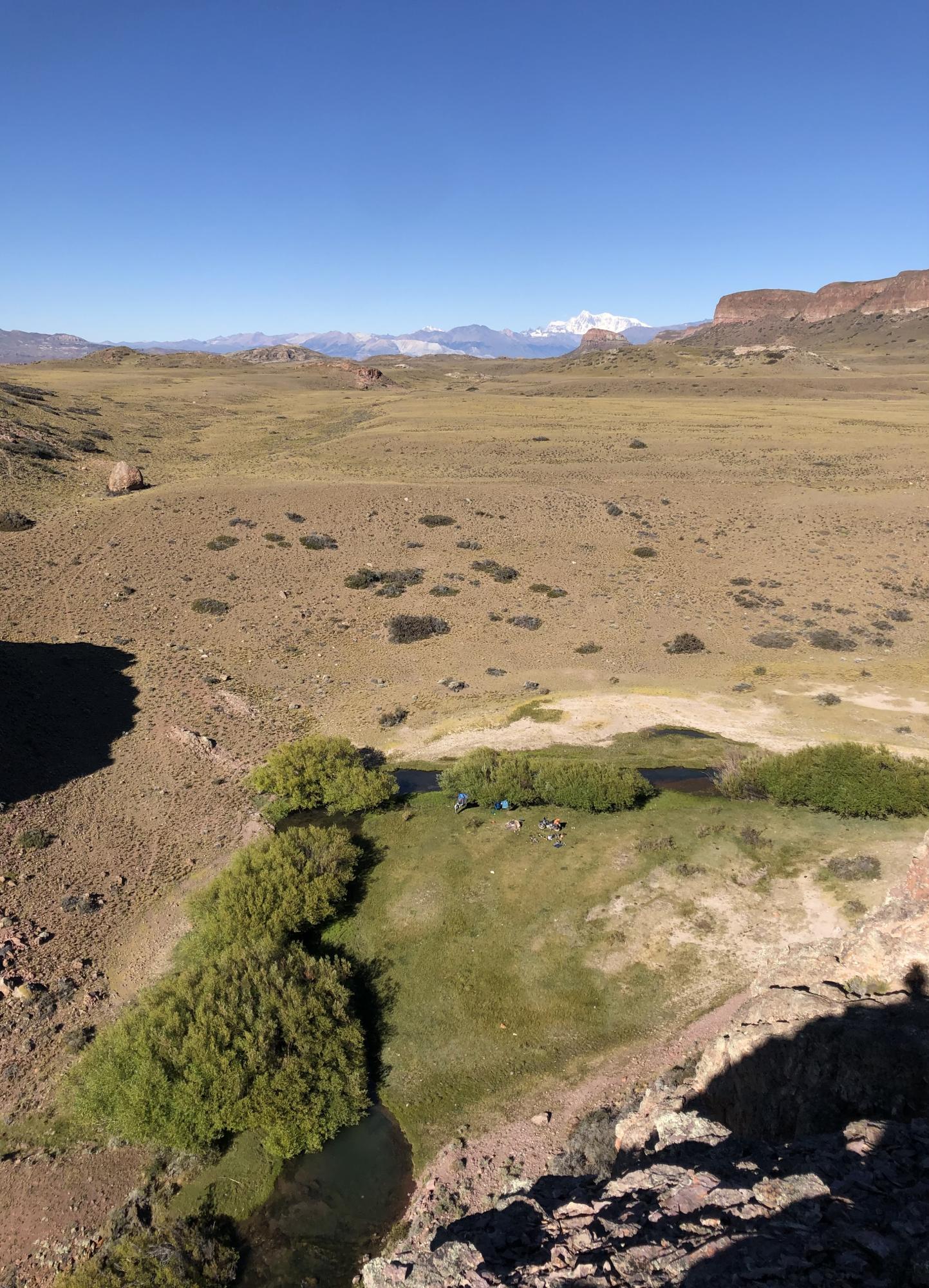
The five litre fuel container donated by a generous Mexican couple pre Bolivia became a mild nuisance. Holding it on the top box had been an afterthought. Every time I reached for hat, soap, rain gear et cetera it needed unhooking.
This annoyance resolved itself on the dirt road when it fell off. Blowed if I was going to go back looking for it.

The delightful, peaceful back road eventually met route 40. I turned right and cruised south.
